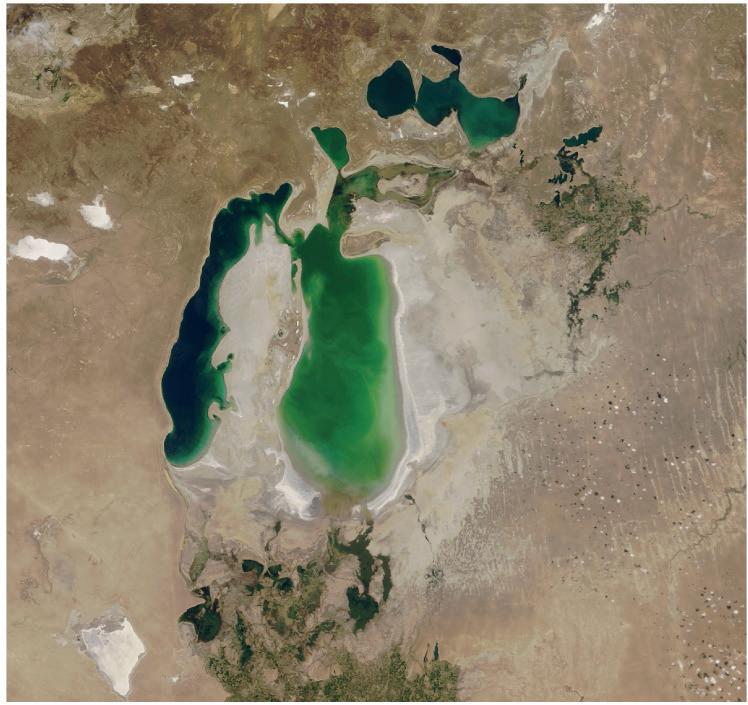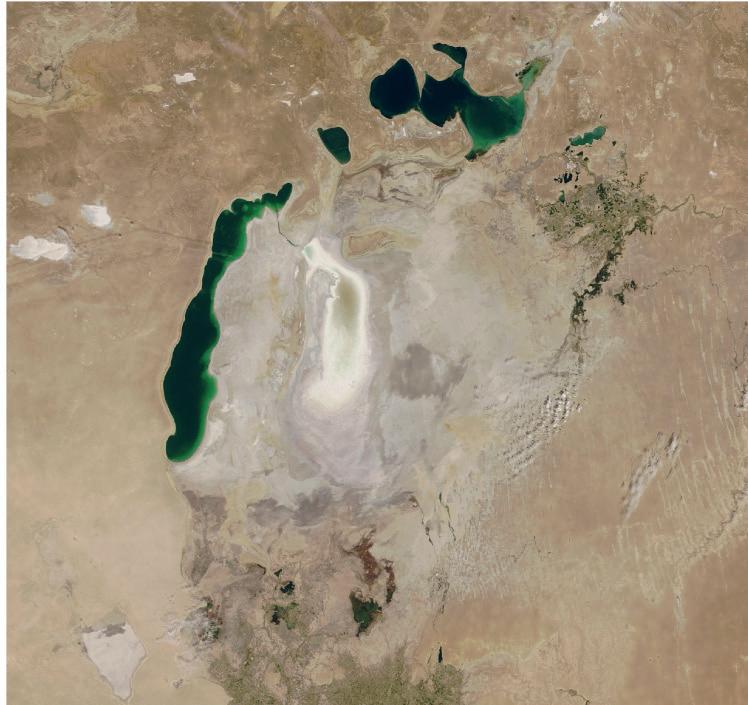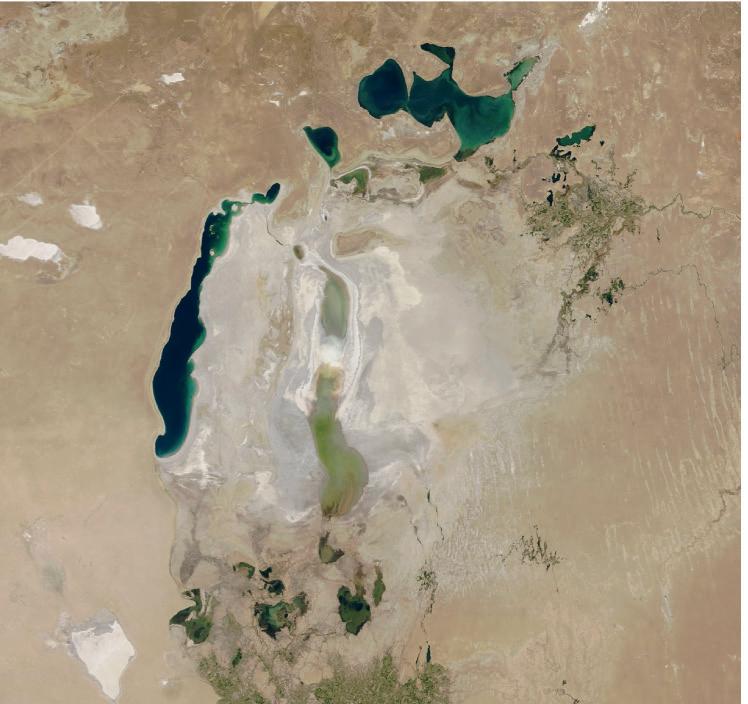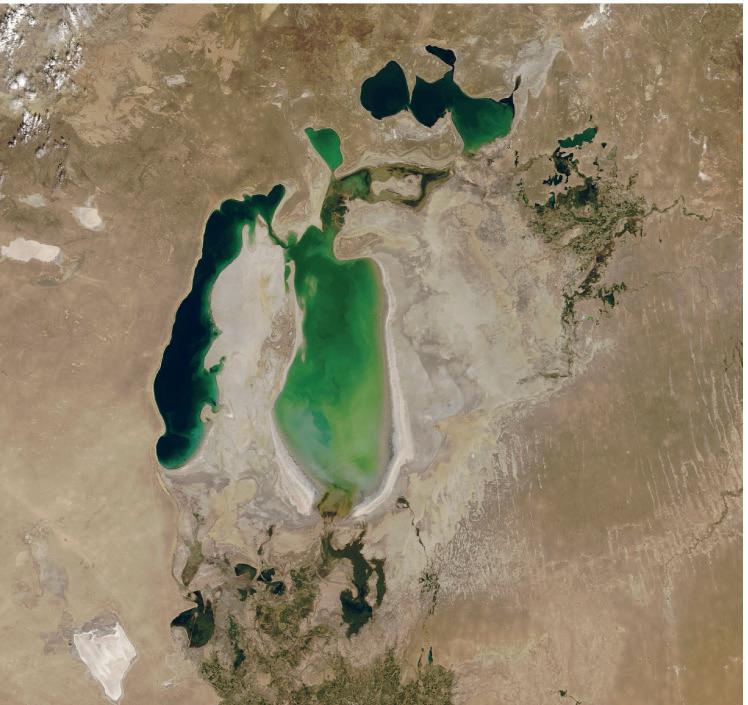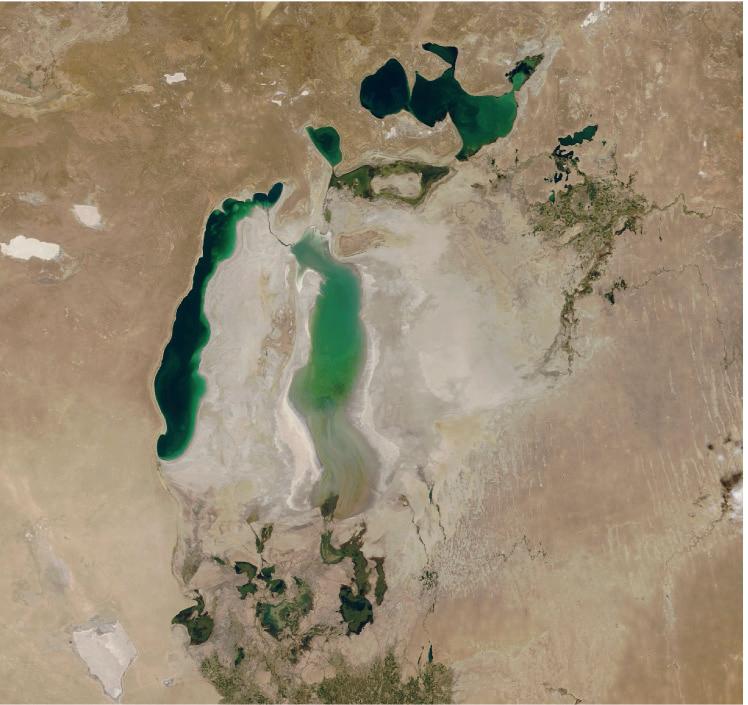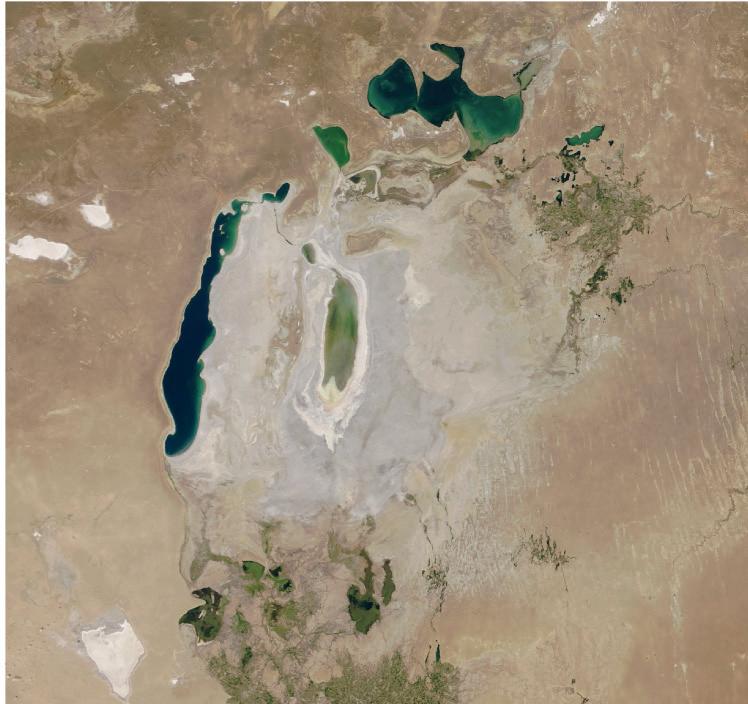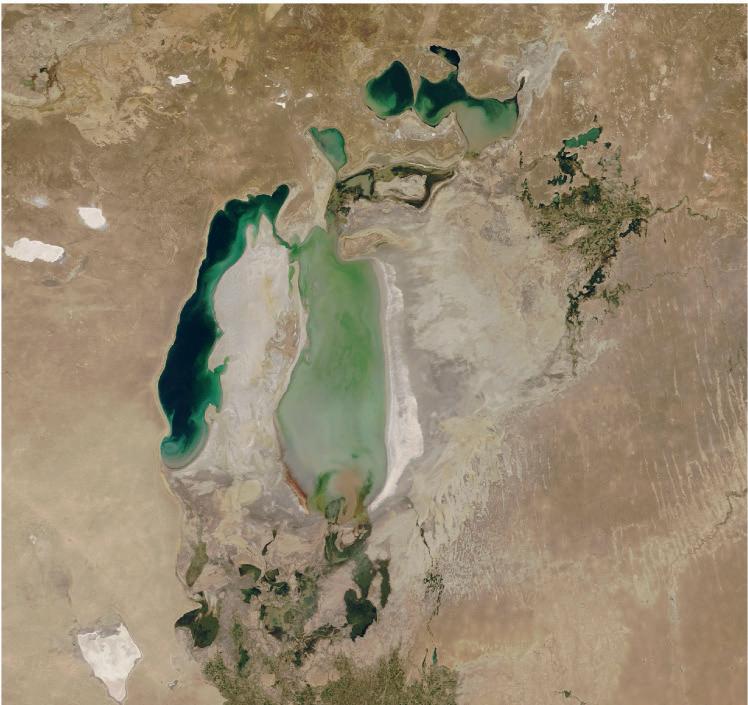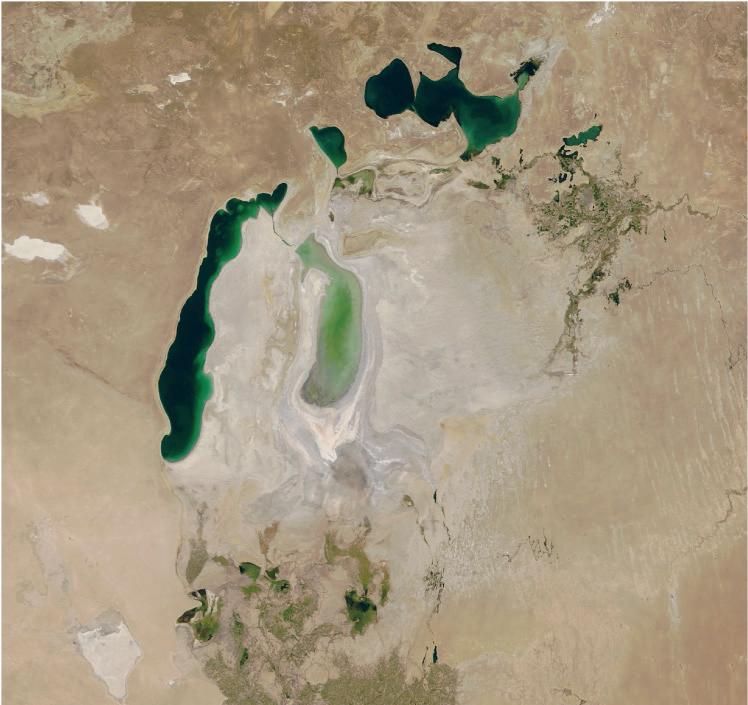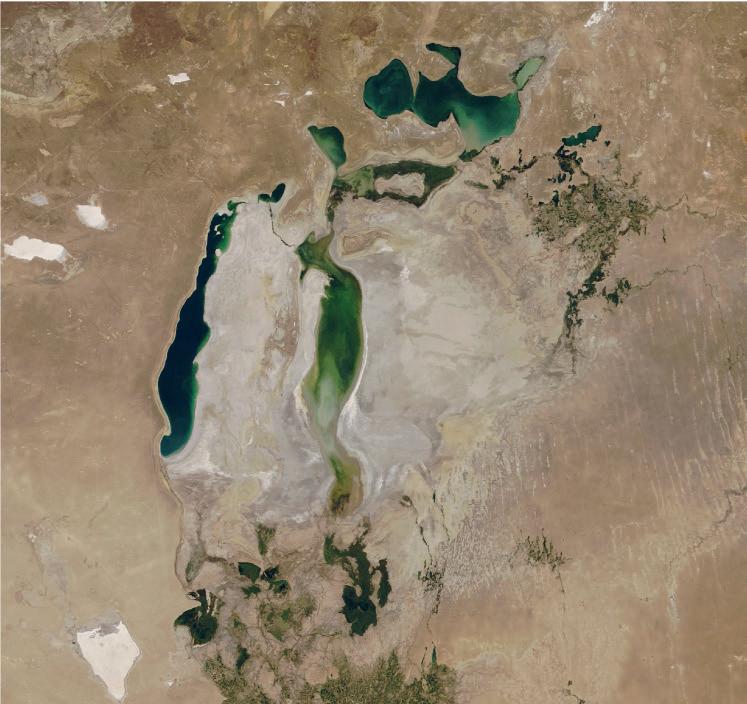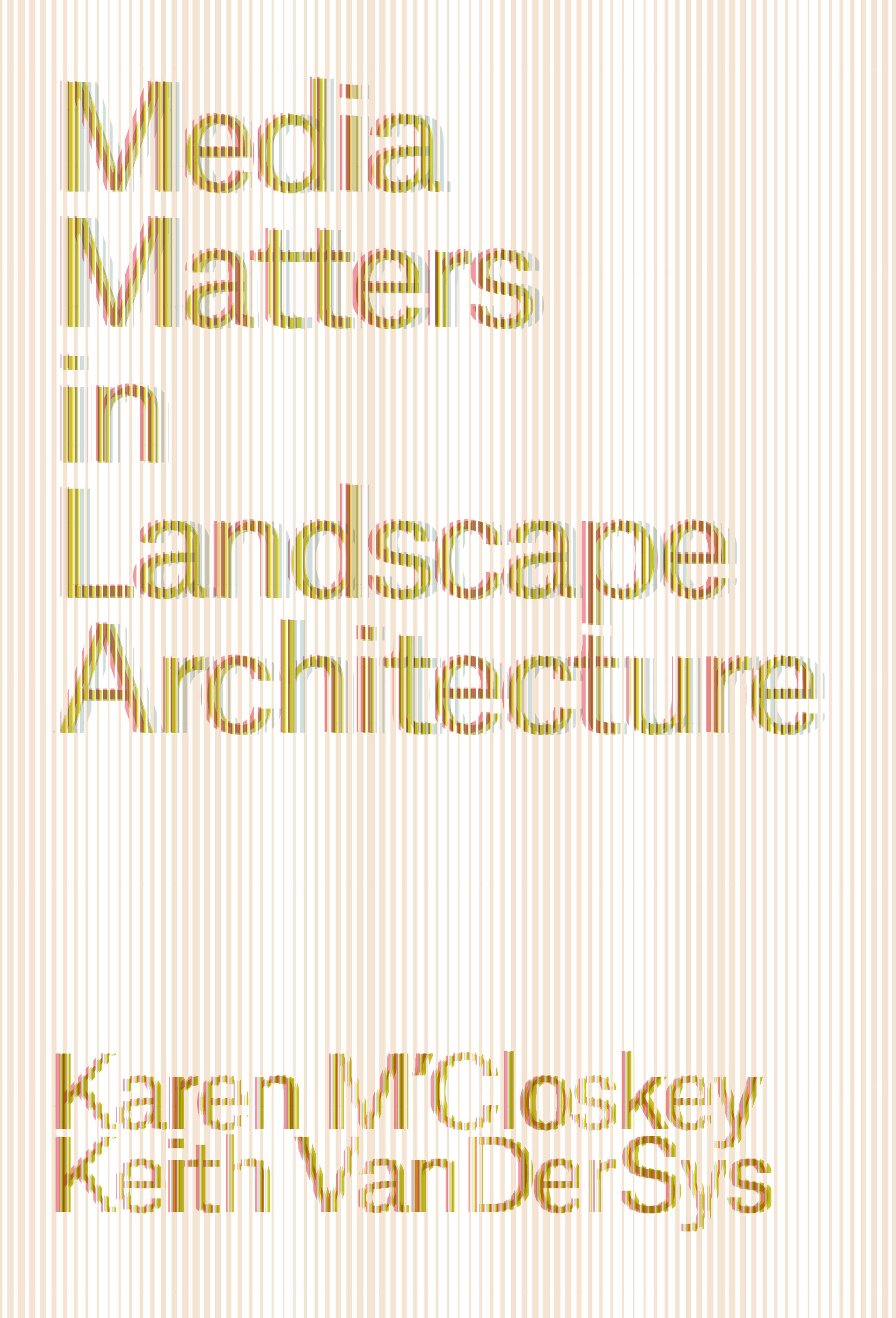
[Mediation] is not the neutral process of the interaction of separate forms, but an active process in which the form of the mediation alters the things mediated, or by its nature indicates their nature.1
—Raymond Williams
To say that a medium matters is not to say that it played a causal role. The medium is in the middle, indispensable to what is going on, but neither the actor nor the acted-upon. 2
—John Durham Peters
It is well understood that media matters to the practice of landscape architecture: the ways in which the conditions of any landscape are measured, drawn, and modeled have fundamental repercussions for how a design is formulated in response to those conditions, just as changing ideas about landscapes and environments lead to changes in their representation.3 The word “medium” derives from the Latin medius, or “middle,” “midst or intervening space.”4 As outlined below and addressed in the following chapters, the concept of environmental media, which is the focus of this book, is multifaceted and has several distinct yet overlapping definitions relevant to landscape architecture. On the one hand, environmental media are the materials of the natural world, many of which are fundamental to the “palette” of landscape architecture, such as plants, water, and soil. On the other hand, environmental media encompass communication about “the environment”—that is, the various images and texts that convey information about environmental issues such as pollution, biodiversity loss, and climate change to the public. Another conception of environmental media, however, refers to media that are not simply used to communicate about or represent landscapes but instead consider their role in how we come to know or produce ideas about landscapes and environments in the first place.
While these different meanings are interdependent, the latter framing of environmental media emphasizes how the creation and interrelationship
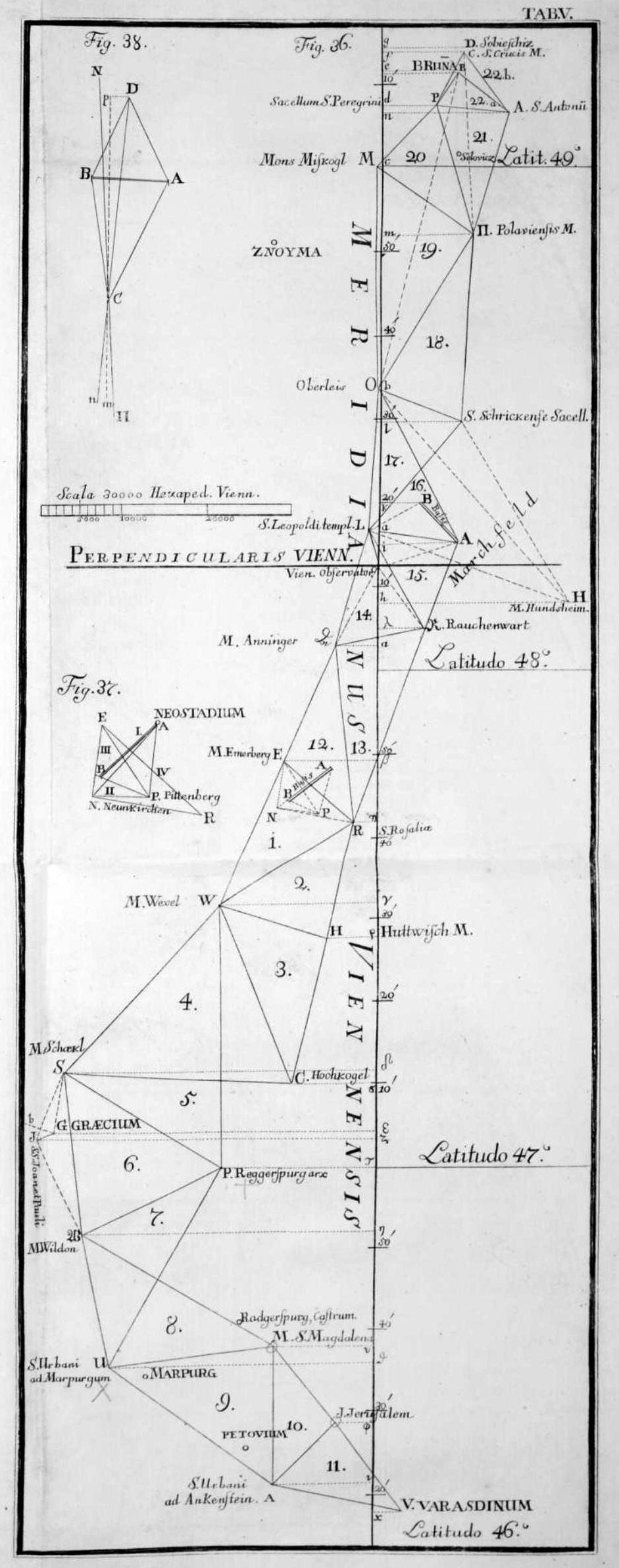
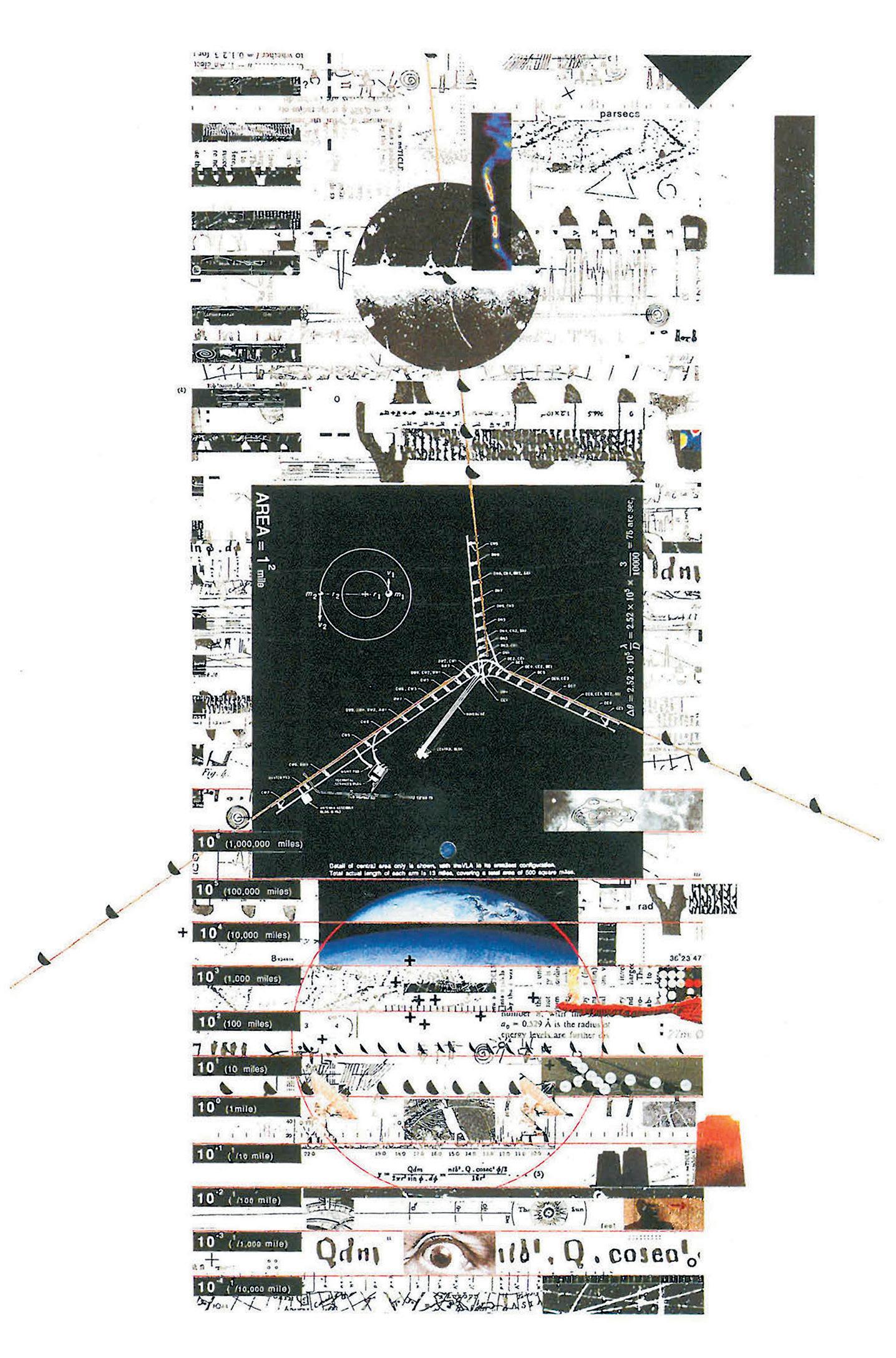
of data, models, and images serve as intermediaries through which ideas about landscapes or environments emerge. Thus, many of the media highlighted in the following pages refer to those that are “infrastructural,” which, according to philosopher John Durham Peters, “are media that stand under.” 5 Infrastructural media, as we intend here, are distinct from (though entirely dependent on) media infrastructures. There are many foundational and contemporary texts about technology in relation to landscape infrastructures, including railways, roads, dams, and airports. Over the last two decades, an increasing number of texts have focused on the rapid expansion of digital media infrastructures, such as data centers, transatlantic cable networks, GPS, and others. While many of the authors in this book draw attention to digital media as key to the projects and practices they highlight, they do not focus on the hard infrastructure and significant environmental impacts required for digital media to function, such as increased energy and water consumption, mining, and e-waste.6 As important as these infrastructures are to the shaping of physical landscapes, this book considers various media for their crucial role in data collection, modeling, and image-making, which shape landscapes in different, albeit less obvious or immediate ways.
The opening sentence of “Eidetic Operations and New Landscapes” by landscape architect James Corner reads, “Landscape and image are inseparable. Without image, there is no such thing as landscape, only unmediated environment.” 7 One quickly recognizes the problem with the phrase unmediated environment, which Corner himself addresses in a footnote:
To the degree that the term environment has assumed many meanings and values. . . it is true to say that environment, too, in its various mediated forms, has become just as much a subjectively constituted and as sensible an idea as landscape 8
This book expands on the footnote in many ways; many of the chapters address the relationship between “landscape” and “environment” rather than treating them as distinct or as background, foreground, or ground for the other. In this introduction, we occasionally use the two terms together. Although they express different ideas and entities with different histories and are therefore not interchangeable, the material conditions to which they refer are inextricably linked and mutually influential, enmeshed in the physical world.
The reciprocal formation of ideas, representations, and the material world entails various technologies that mediate their relationships. Numerous books and articles have examined the concepts of “media” and “environment,” and recently, there has been a proliferation of publications that explore the relationship between these two ideas in ways that go beyond early media theorists’ formulations of media environments or media ecology as developed in the 1960s.9 One of the criticisms of the limitations of these initial conceptions is that environment and ecology were treated metaphorically rather than materially; that is, they referred only to the relationships between humans and technology as environment and to ecology as the complex interactions between human cognition and media technologies—especially “mass media”—without paying attention to the material reality through which all technologies are made and in which they are embedded.10
Our approach to the relationship between these two terms is very much in line with that of Adam Wickberg and Johan Gärdebo’s in Environing Media (2023), which was published while Media Matters was in progress. The editors define environing media as those that explicitly focus on shaping the human–earth relationship and describe activities, such as how data are collected and acted upon, as the middle ground of environment as media.11 As Sverker Sörlin states in his contribution to their collection, “Environing consists of processes whereby environments appear as
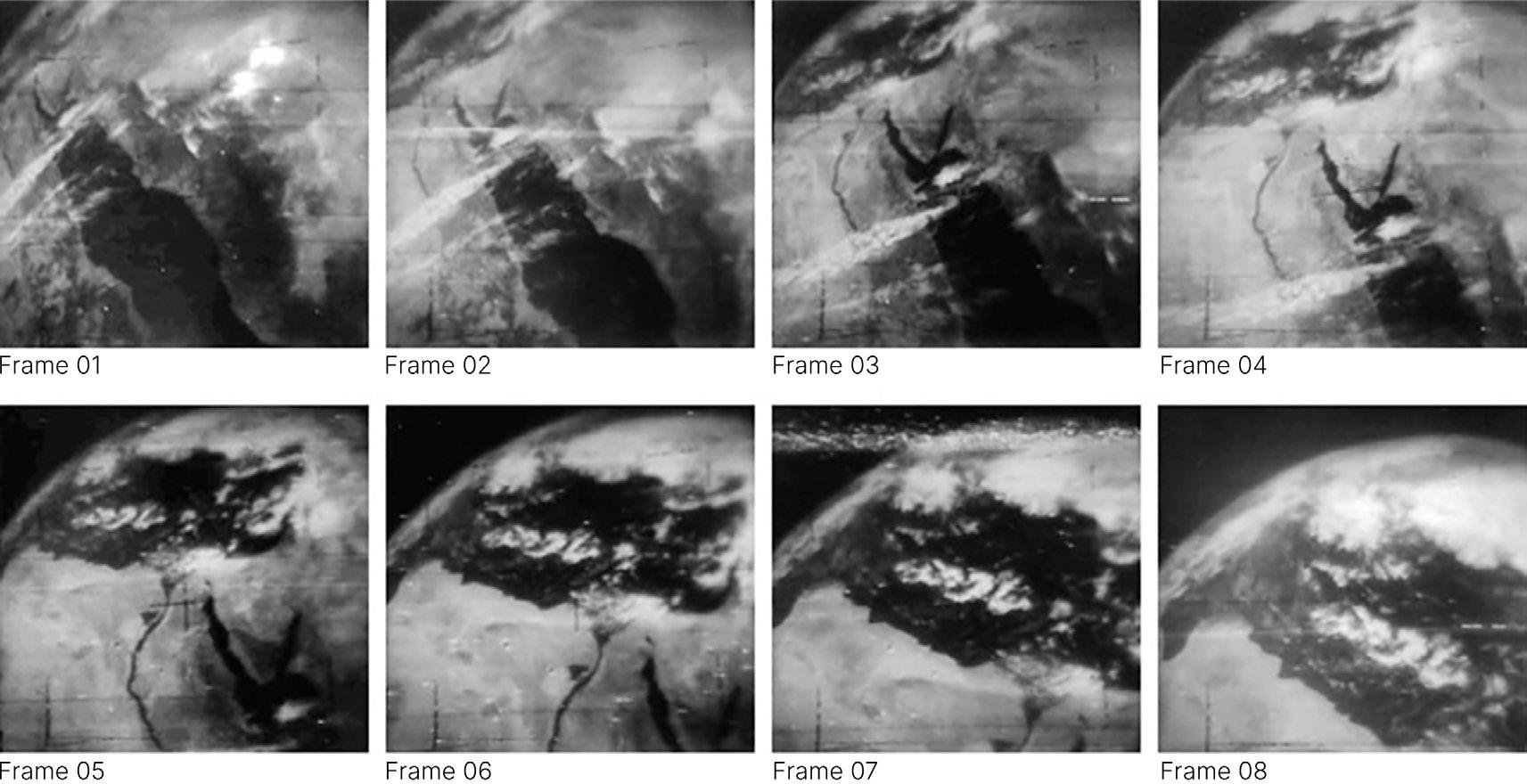
historical products, and technologies and media as the tools required for the environing to take place.”12 Thus, as media change—and approaches to their study evolve—so do conceptions of “environment,” and vice versa. Accordingly, it is essential to consider recent significant shifts in the operational aspects of images and models, especially those that mediate between landscapes—which are localized or regional and primarily terrestrial places—and environments that have a broader scope, encompassing the “ephemera” that affect local landscapes, as well as those that span across scales and include global environmental change.
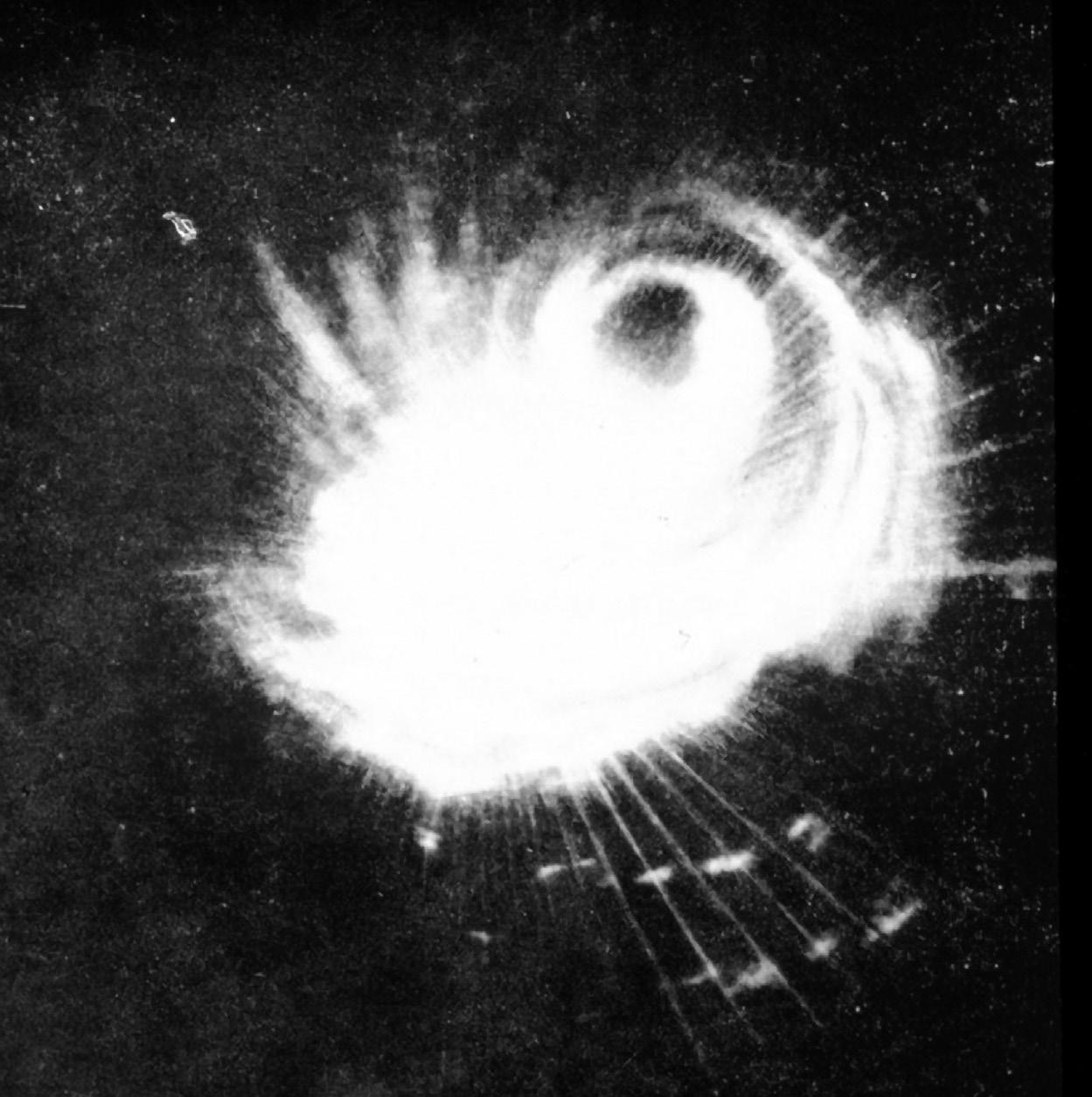
In its early usage, the term “environment” referred to the immediate surroundings; at the scale of the landscape, it would therefore be considered coterminous with it.13 Although efforts to modulate environments to create particular landscape characteristics through attempts at climate modification are not new—such as afforestation to generate moisture and fertile
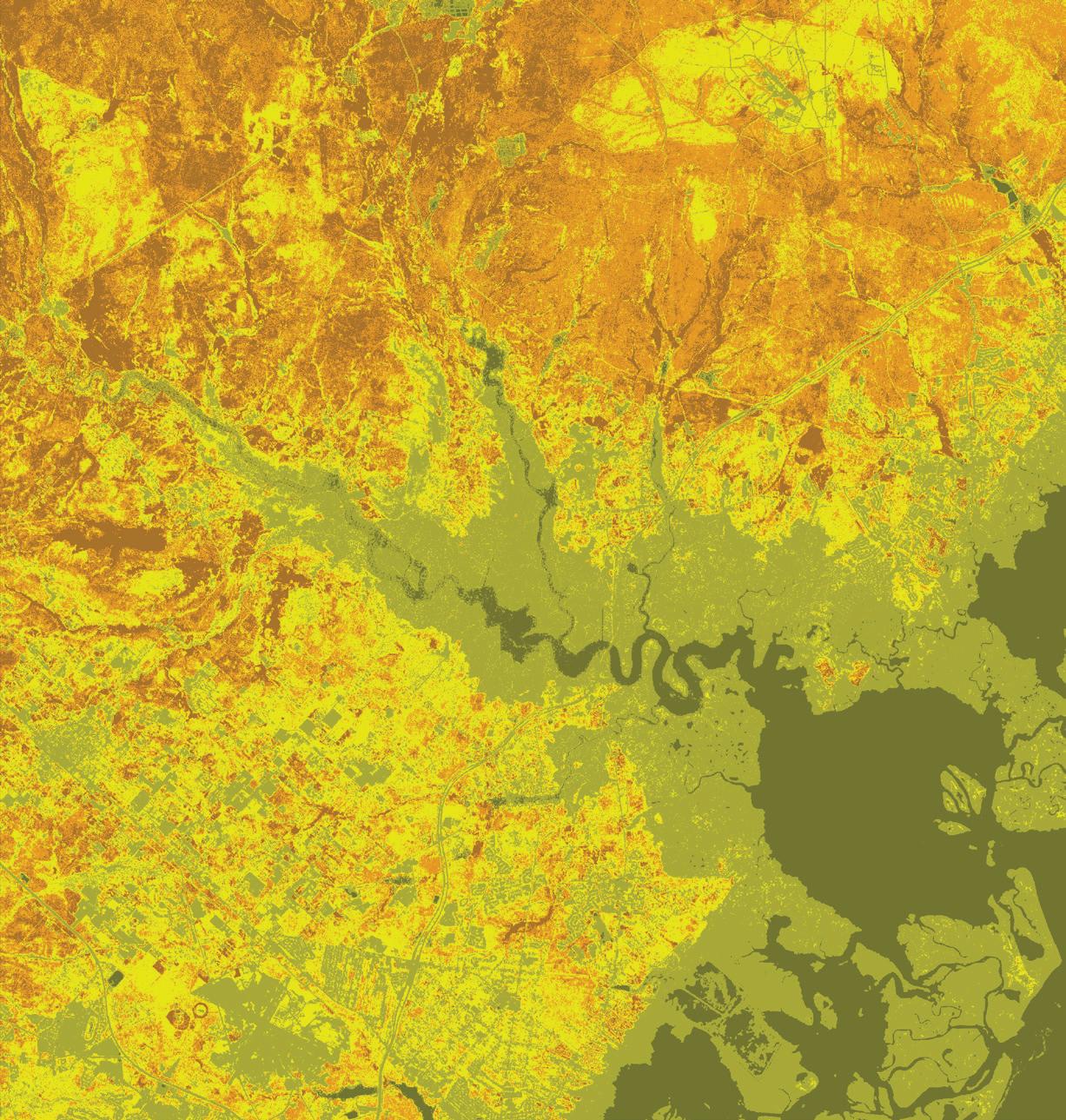
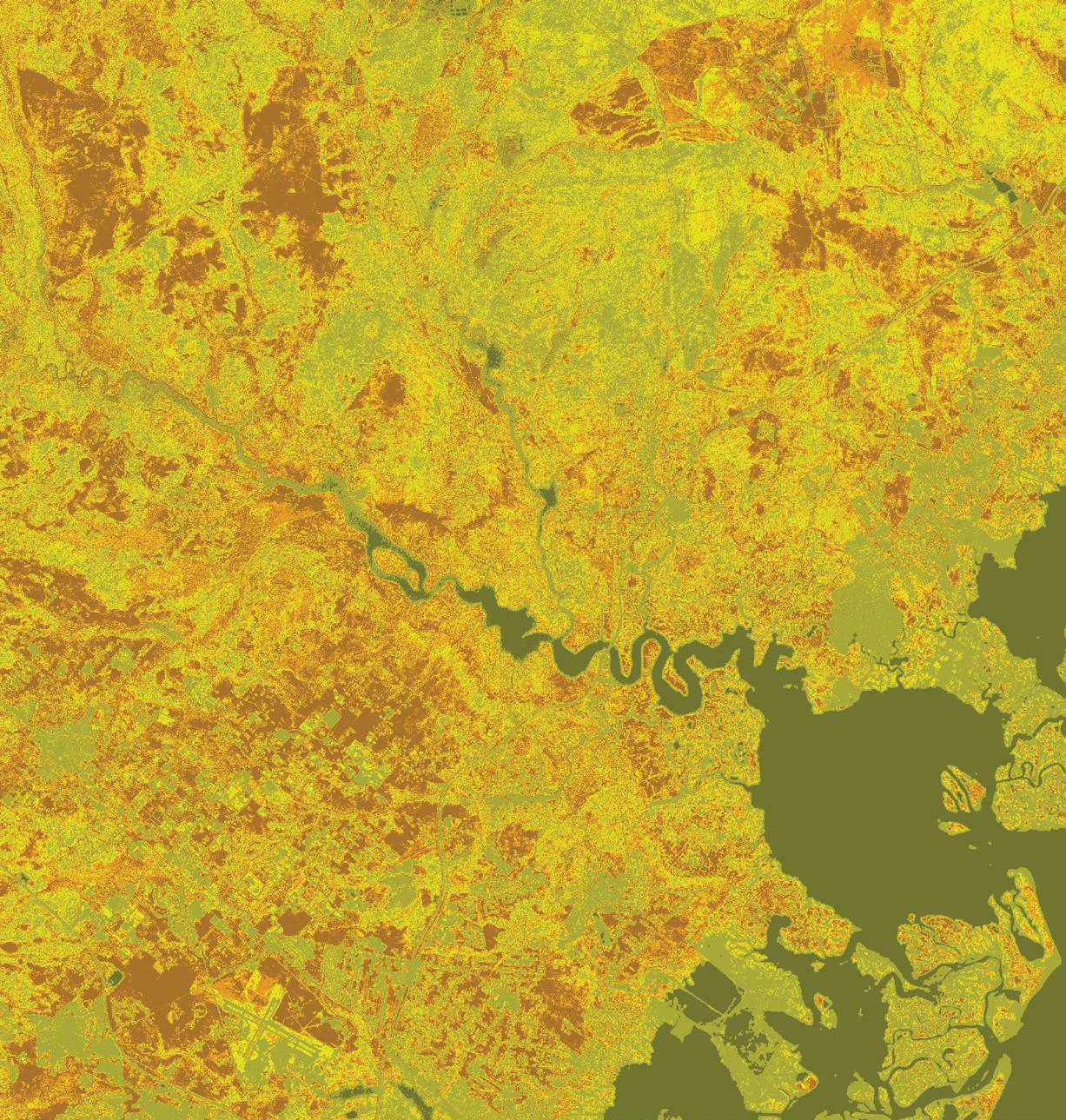
land—these effects have not been considered on a global scale until recently.14 Similarly, since the late 19th and early 20th centuries, scientists have understood that global climate patterns such as atmospheric and oceanic circulation (the jet stream, El Niño, etc.) cause different weather patterns in different parts of the world. However, the concept that the environment itself is “global” is much more recent and would have made little sense before World War II and the development of nuclear technology. Subsequent developments in atmospheric sensing, Earth observation technologies, and the development of climate models have furthered this understanding.15
In his book Surroundings , historian Etienne Benson suggests that the relational aspect between an entity and what surrounds it is inherent in the meaning of environment, or “a relationship in which each party not only influences the other but also in some fundamental way


determines what the other is .” 16 This quote is similar to the epigraphs of this introduction. If the entities to be considered are the landscape and the media used to elaborate aspects of that landscape, then it becomes clear why the nature of environmental media matters to landscape architecture. As Benson observes, “Each attempt to adapt the concept of environment to new circumstances and aims has been accompanied by changes in the understanding of the entities that are surrounded.” 17 Indeed, it is impossible to think about the practice of landscape architecture without thinking of environment in this expansive sense, that is, in a global climate context, even though the impacts on landscapes—and the people, plants, and animals that live in them—are more localized and therefore highly variable. One of the key challenges for practitioners is the apparently unbridgeable gap between what we know about global environmental change and the local impacts of that change on landscapes.
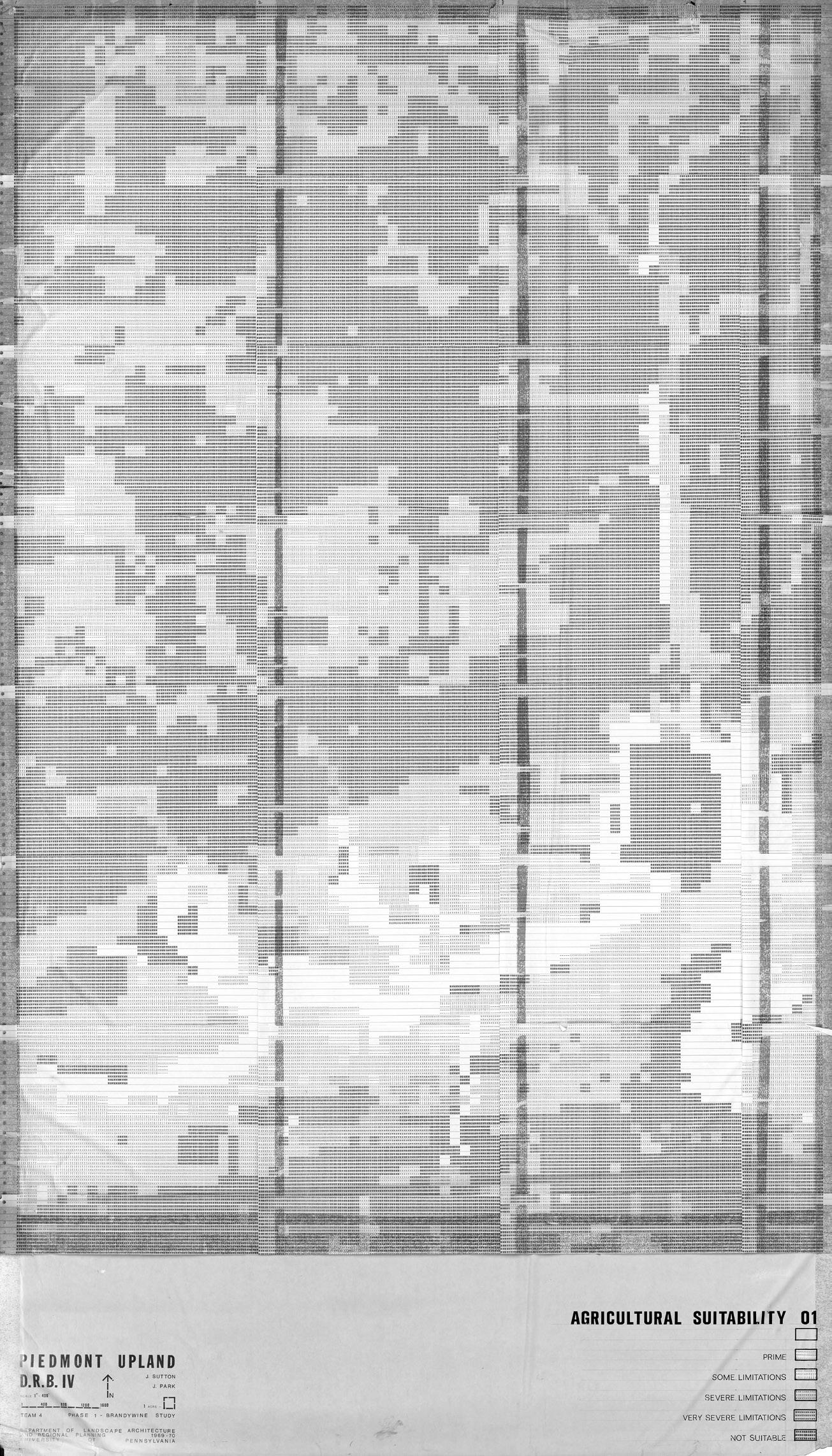
While landscapes and environments are materially and conceptually intermingled, they are also kept apart by the various media that underlie their creation. As Corner notes in the essay from which the above quotes are taken, images have always been operational for landscape architects.18 They are the intermediaries through which concepts and designs are formed. Therefore, the divide between how we name, map, and model things that are “environmental”—so-called ephemera such as rain, mist, fog, tides, and clouds—and things that are “landscape” (e.g., lakes, rivers, etc.) significantly shapes the built environment.19 For instance, the hard infrastructure of shorelines may be constructed of concrete, metal, and stone, but as several of the chapters emphasize, data collection, measurements, and subsequent delineation of “normal” environmental conditions help produce concepts such as floodplains and sea level, which are the basis upon which these hard infrastructures are designed and built. As Science, Technology, and Society Studies (STS) scholar Sara Pritchard writes in “Toward an Environmental History of Technology”:
Surveys, nails, drills, wells, radioactive tracers, traps, steamships, deep-sea dredging, and radio transmitters helped foresters calculate average tree size, engineers estimate rivers’ flows, ecologists develop the notion of food webs, naturalists describe the deep ocean, and wildlife biologists track animals. . . New technologies, and new uses of established technologies, produced not only new forms of natural knowledge, but also new conceptions of ‘the environment’ itself. 20
As mentioned, what applies to technologies that directly intervene in landscapes and environments also applies to media technologies that shape our understanding of them. This idea, now taken for granted, is further enriched by the wealth of exciting work by landscape historians, environmental historians, STS and media scholars, and historians and philosophers of science, some of whom are contributors to this book and to whom we are deeply indebted. Scholarship on the role of media in shaping perceptions, which in turn shape landscapes and vice versa, is, of course, not new. There has been considerable historical work on how landscape painting and photography have influenced perceptions. 21 However, the emphasis tended to be on the visible and visual elements—what the images represent or symbolize—rather than on the constellation of technologies, practices, and institutions through which images operate. 22
The 1980s, however, marked a significant period for scholarly work on visual culture, including how cultural influences shape vision itself. 23 Discussions during this period often centered on landscape and representation, and maps as a form of media were central to this work. Grounded in critical theory and poststructuralism, and partly in response to the rise of GIS, critical cartography challenged claims of cartographic objectivity, focusing instead on the social aspects of maps and questions of whose interests were or were not served by these representations. 24 Given the prevalence of map use and mapping practice in landscape architecture, this work has had a significant impact on the discipline. 25 Yet, it is also acknowledged that mapping practices are far more varied and messy than some of these critiques have assumed. 26 Historian and cartographer William Rankin argues that these critiques solidified a view that was already widespread among practitioners. 27
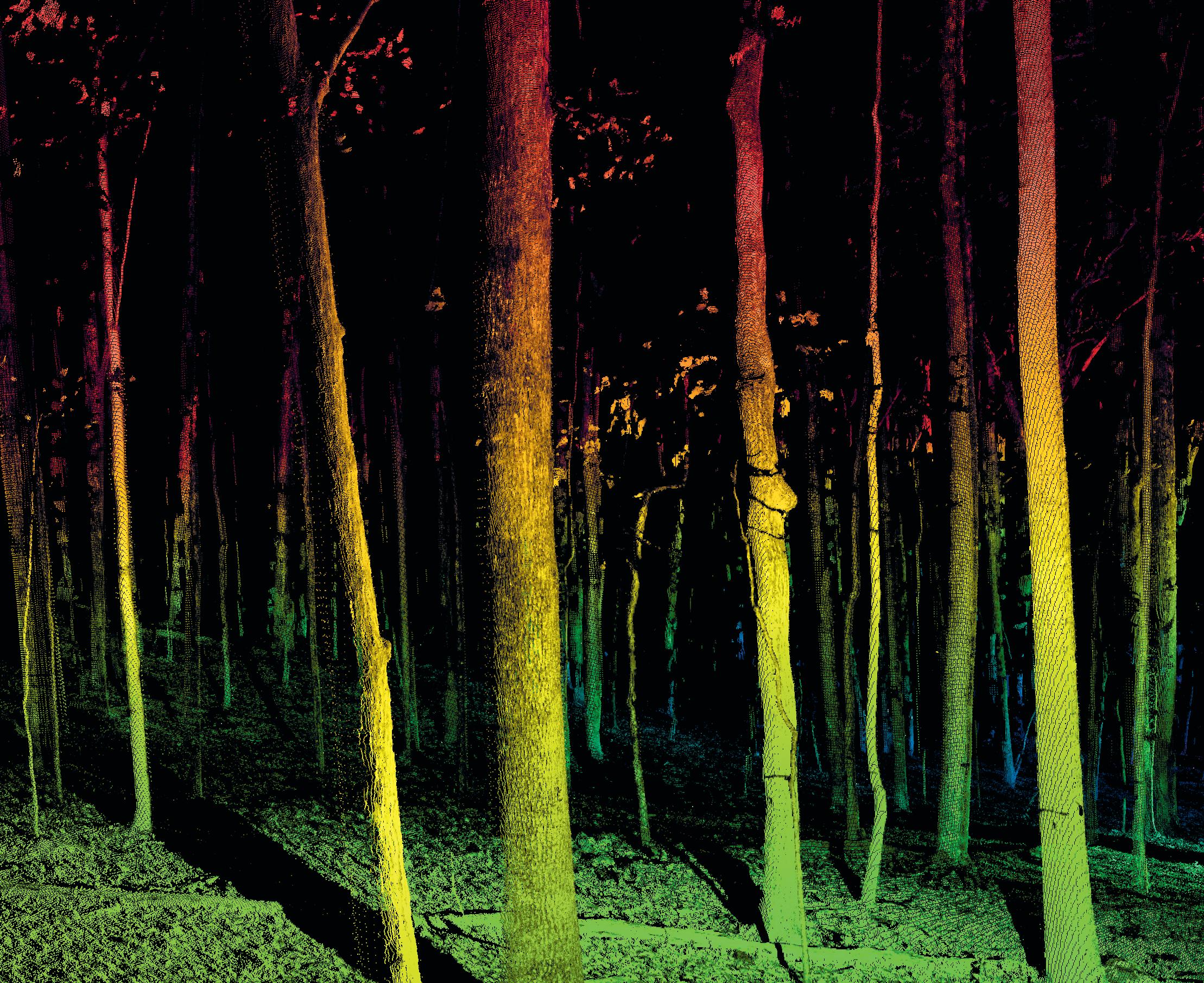
Perhaps not surprisingly, many of the chapters in this book deal with surveying, sensing, and mapping and/or are written by practitioners. Rather than focusing solely on the media end products that result from these practices, some authors describe the measurement and data collection practices behind their creation. These include models and images that are not pictorial or representational and, in many cases, are seen only by those who make and use them. The non-picturable characteristics of these media are relevant here. Jussi Parikka, in his book Operational Images, calls this the “invisual” (not to be confused with invisible) aspects of data: “We should look at the operative transformations of the image as it pertains to the multiple materials and their abstractions, and abstractions coming back to transform the materials.”28 Parikka shows how photography and computer imagery are connected through techniques such as photogrammetry. Maps, he says, are the “link to the operational aspect of predigital instrumental images.”29 Just as Corner asserts that aerial representation is significant for its “instrumental utility in the modernization of the earth’s surface” rather than for its scenographic perspective, Parikka argues that the Earth itself is made into an image through other images, such as photogrammetry, which has been rapidly advanced by digital imaging, even though it existed before digital technology.30
Following Parikka, it is important to emphasize that while digital technologies have significantly transformed our landscapes, environments, and design methods, we are not claiming that these technologies always represent a radical break, as some others have argued. For example, drawing attention to the ontological difference between photographs and digital images, architect John May quips, “No one has ever produced a digital photograph.”31 May says that we are deluding ourselves if we do not consider that the shift from photographs (light and chemicals) to images (electrical signals) is changing us profoundly, since each technical system has a specific conception of time that is “inseparable from the forms of thought and imagination that system makes possible or impossible.”32
In contrast, W. J. T. Mitchell insists the distinction between an analog or digital “photograph” is, in itself, not relevant because the content is not inherent in the medium.33 Using the example of a family photograph, Mitchell maintains that such a distinction “isolates the ‘being’ of photography from the social world in which it operates, and reifies a single aspect of its technical processes.”34 While we clearly agree with May’s point that
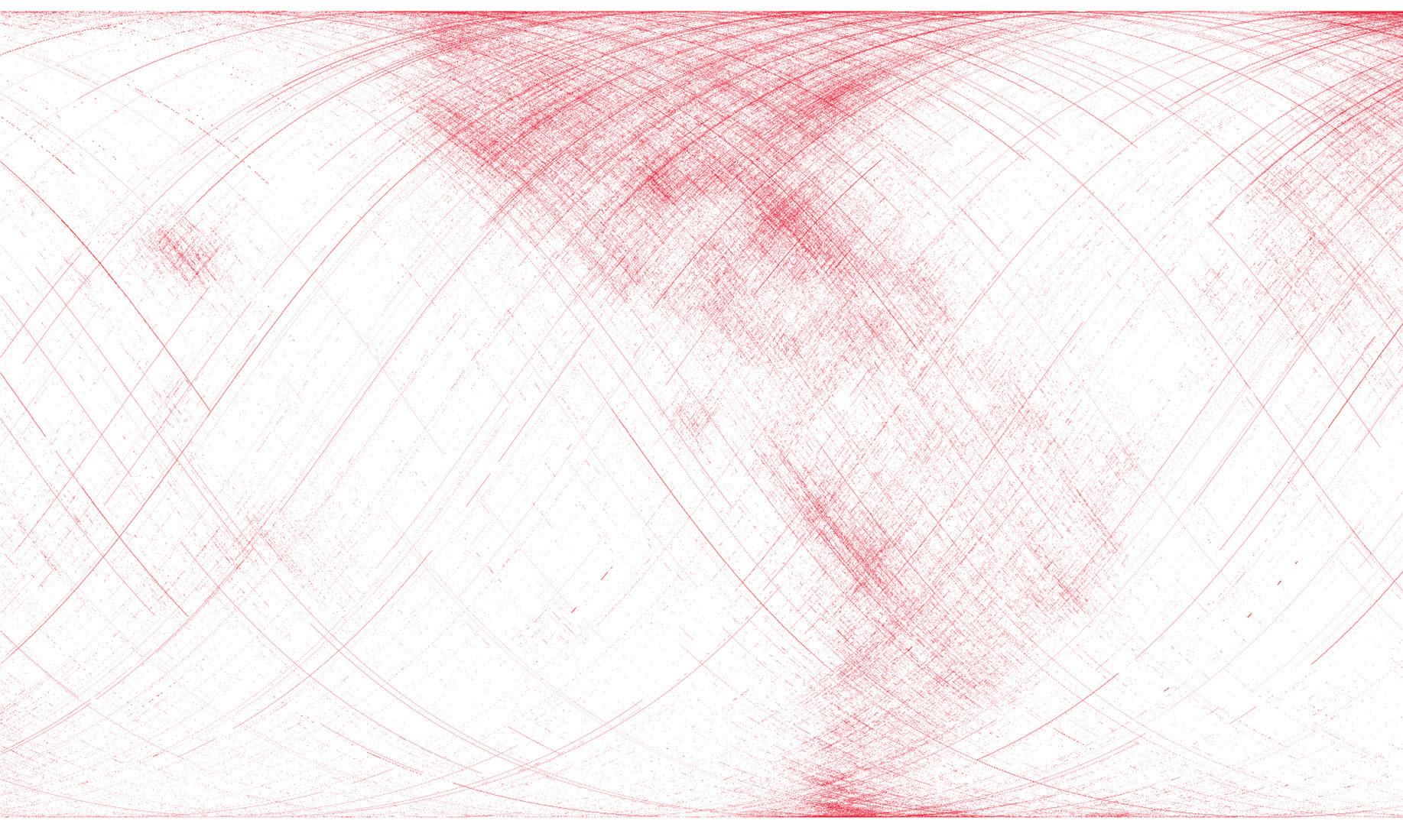
the medium matters, the shift from analog to digital does not always constitute a fundamental change. In some cases, as in Mitchell’s example of a family photograph, the medium is not critical to the image’s function; the image itself is not infrastructural or operational in the sense described here. However, there are many instances where the distinction does matter, where the “technical process” is the content and the medium is the message. 35 This is undoubtedly true for images that embed spatial data for the express purpose of quantifying, mapping, and modeling environmental and landscape change. As Pritchard aptly states, “environmental knowledge cannot be isolated from environmental knowledge-making.” 36
Media Matters goes behind the scenes to consider how media technologies that have emerged in recent decades are reshaping the practices of artists, designers, and scientists. The media infrastructure of climate science and Earth remote sensing, coupled with the increased availability of spatial information and modeling software, provide the context for many of the chapters that follow. Many of the practices and projects are geospatial in nature, where the media and methods employed are designed to capture phenomena that are not directly visible to human perception and where
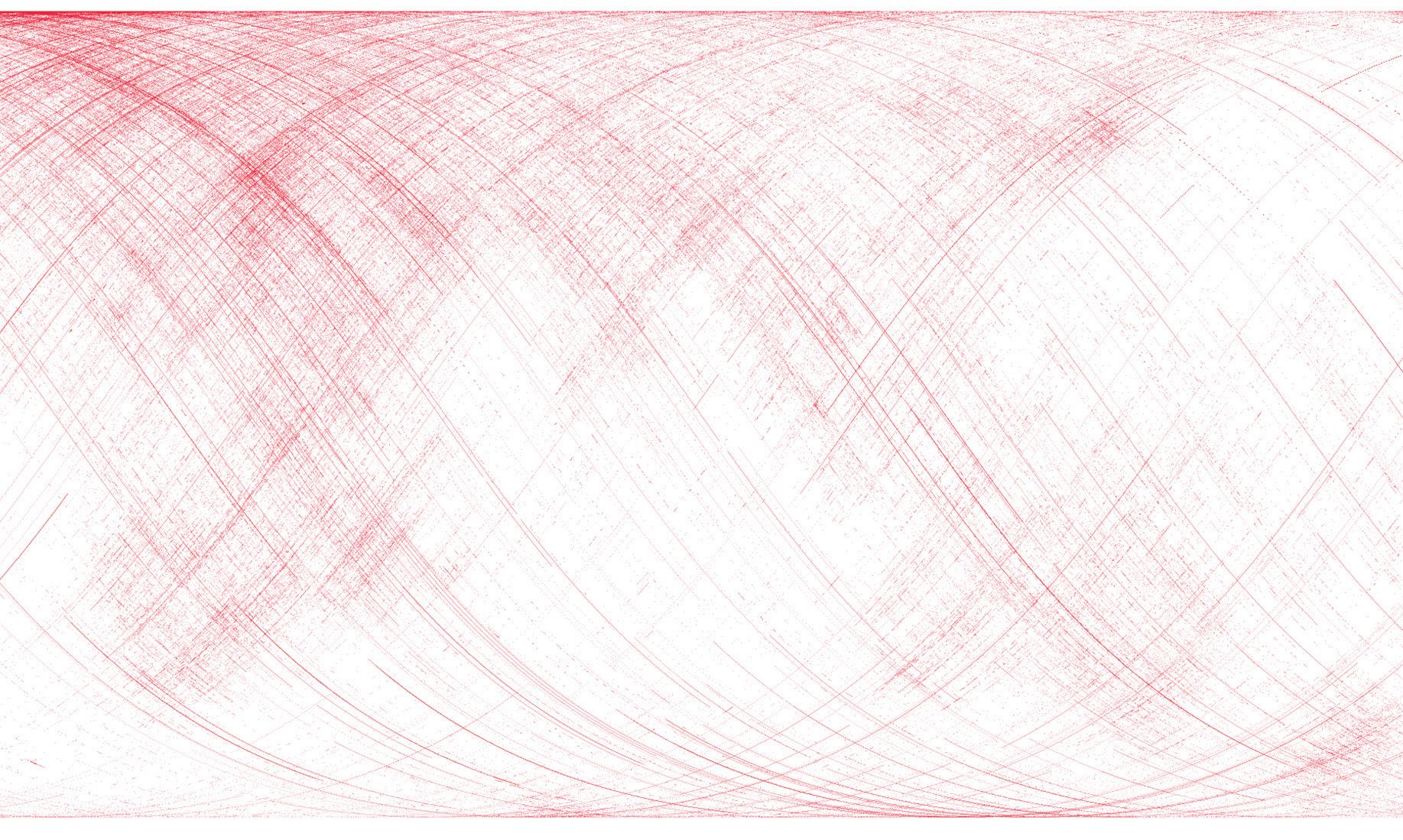
there is a high degree of uncertainty or changeability due to dynamic material conditions. What has become increasingly apparent is that the pace of climate change is faster than models predicted two decades ago, and with that comes the recognition that uncertainty and variability (which have always been there) cannot be tamed. As Durham Peters notes, “Media capture and fail to capture time, whose fleetingness is the most beautiful and difficult of all natural facts.”37 This has been a primary challenge for our discipline.
Contributors
In keeping with the interdisciplinary nature of practice and the aims of this book, we have invited contributions from a range of disciplines, including landscape architecture, ecology, civil engineering, art history, environmental history, STS, and media studies. The projects focus heavily on the US context, partly because of our familiarity with the practical context, but also because the data infrastructure and technology that underpin much of the media discussed originated in the United States. Many have pointed out the problematic military origins of these technologies. At the same
time, the United States has the most open, freely accessible geospatial and Earth observation data. What Libby Robin calls “NASA bias” should not be downplayed, as it permeates how we environ globally, but this ongoing and much-needed critique is not the focus of this book. Instead, many of the chapters explore ways to move beyond the limitations of existing datasets, and the authors are not quite ready to abandon the “positivist” aspects of data mapping, even as they acknowledge the contingency of such information.
The crises of rapid climate change and biodiversity loss underlie a third of the chapters. Others, while not explicitly addressing climate change, deal with related shifts in the push for increased data collection, where environmental quantification comes at the expense of qualitative and “non-expert” ways of knowing. This includes attending to the root causes of the climate crisis in fossil fuel extraction as well as historical and ongoing racial injustices. Rather than abandoning data collection and mapping altogether, some projects use them to tell different stories using diverse kinds of information in order to complicate single, overarching narratives.
There would have been any number of ways to categorize the chapters by specific media, such as by Earth and aerial sensing technologies (drones, satellites) or environmental sensing technologies (in situ sensors for moisture, temperature, etc.), by techniques of data collection and measurement (such as grids, plane surveying, and photogrammetry), or by media products (such as maps or atlases). To do so oversimplifies the promiscuity of practice due to the aggregate media used to accomplish the work described. However, because common themes run through the book that connect some chapters more closely than others, we have clustered them below and organized the chapters accordingly.
Several chapters focus on data interpolation over vast spatial scales, which is achieved by translating measurements of ephemeral or highly variable conditions collected at local sites, such as stream gauges and weather stations. These measurements are then used to generate averages and probabilities about these ephemera, which subsequently inform decisions about landscape design and management. In other words, the media of grids and datums both presume and produce a stable view of the environment, resulting in landscapes of probability and risk. Although probabilistic
knowledge emerged in the 18th century and was institutionalized in the 19th century, risk management did not emerge until the 20th century.38
In “Measuring the Sky from the Curve of the Earth,” Jeffrey Moro provides a brief history of weather stations, tracing their emergence from the 18th and 19th centuries to the present. Moro describes the challenges of siting stations due to the variability of landscapes and the efforts to standardize data collection across different locations. As he demonstrates, weather stations do not simply “observe” conditions; they actively participate in constructing weather data. Wilko Graf von Hardenberg’s chapter, “Levels of Lakes: Between Baselines and Research Objects,” discusses the prominent role of lakes in the history of geodesy, particularly in the early 19th century. During this period, lake levels served as a zero datum for measuring the topographic elevations of nearby mountains before the mean sea level was established for that purpose. Although such measurements appeared to aim for scientific precision, early reference levels reflected individual measurements that did not capture natural variability. Nevertheless, these data-gathering processes affected lake management in different parts of the world. This example is an important precursor to recent debates about sea levels.
Attempts to link local measurements of ephemera to predictions of patterns over large regions are also crucial aspects of our chapter. We provide a brief overview of how probabilistic methods used by hydrologists in the early 20th century to measure rainfall frequency, volume, and downstream effects led to the creation of floodplains as risk objects. We focus on the maps produced by the Federal Emergency Management Agency (FEMA) for the US National Flood Insurance Program. FEMA’s recent attempts to update the maps to be more accurate run up against the deep uncertainties involved in mapping such phenomena, especially as the agency attempts to incorporate climate change into its assessments.
In contrast to the projects described above, where data are collected to understand and produce norms for forecasting, Brian D. Harris and Justin Shawler, Matthew Jull and Leena Cho, and Ilmar Hurkxkens describe their work as part of ongoing experiments. While natural fluxes are inherent in landscapes and environments, global heating is exacerbating the frequency and intensity of these dynamics, revealing the inadequacy of old models based on stability and control. Many media are used to understand
this accelerated change: material collection (e.g., soil borings), in situ sensors (e.g., for moisture and temperature), sensor array geometry (i.e., grids), and the various models into which these data are fed. Unstable sediment is inherent in these projects. Although surveying and core sampling of soils have always been part of landscape architectural practice, and the (re)making of landscapes has always required the addition and augmentation of living media, the projects highlighted in these chapters take uncertainty as their starting point, so that not all design decisions are made up front but are integrated into ongoing cyclical monitoring and assessment.
Harris and Shawler discuss incorporating adaptive management through field monitoring and feedback into the models for their work on coastal wetland restoration, the long-term success of which is highly uncertain. Unpredictable rates of sea level rise make modeling beyond the very short term impossible. Similarly, Jull and Cho report on a project in Utqiaġvik, Alaska, an area that is warming the fastest on Earth. Working with an interdisciplinary team of designers, scientists, and local leaders, the authors describe efforts to understand permafrost dynamics using a sensing approach that differs from traditional environmental monitoring, which aims to exclude local effects or “outliers”—the measurements that don’t fit the norm.
Just as Harris and Shawler point out that it is impossible to know in advance the quality and quantity of material needed to elevate wetlands to keep pace with sea level rise, Ilmar Hurkxkens’ chapter explores how adapting landscapes through continuous surveying and robotic construction could substantially change the typical working process of landscape architects and engineers. The emphasis is on designing formative processes rather than final forms, as well as adapting to changing material conditions on site over multiple time scales.
Similar to how Hurkxkens describes adaptive construction methods using autonomous sensing and robotics, Christopher Streb and David Blersch’s chapter on “regenerative techno-ecosystems” imagines a future in which sensing and monitoring technologies will enable ecosystems to regulate themselves with the help of human technology. In Streb and Blersch’s chapter, however, technology becomes imperceptible—that is, it becomes “environmental”—taking media ecology literally and in a direction its early
proponents could not have foreseen.39 Ubiquitous computing has been a goal of tech developers for over half a century. The question is what kind of environmental relationships might emerge beyond personal convenience, entertainment, or ever-more “intelligent” optimization that benefits technology companies above all else. Jennifer Gabrys’s chapter illustrates one such approach through “The Smart Forests Atlas.” This online, collaborative, and emergent atlas includes information gathered through multiple media forms—logbooks, a radio, stories, and a map—in ways that operate beyond the environmental management approaches of Big Tech and expert science. Gabrys’s concept of “vegetalizing” digital technologies asks us to consider forests as a model for how we might view our media technologies as sites of “reciprocity and mutual flourishing” rather than limiting them to optimization.
In an example of an entirely virtual landscape, Paolo Patelli and Jussi Parikka’s chapter describes different models and model types nested together to simulate ecological interactions and environmental changes across scales. “Model ecologies” are synthetic “ecosystems” created by separating the landscape into various model components (e.g., hydrology, geomorphology, etc.) and then reassembling these components to develop a comprehensive model for running simulations aimed at gaining insights into the natural world. The information gleaned from these simulations can be used to make decisions about how to manage the landscape itself. As Patelli and Parikka argue, models are not just representations; they are already interventions.
The remaining chapters focus on the promises and limitations of the view from above, made possible by increasingly sophisticated and widely available data and technology. The use of environmental data derived from aerial and satellite imagery is not new in our field—quite the opposite. Landscape architects were early adopters of computers and have been instrumental in developing and experimenting with geographic information systems (GIS). This work was, and still is, often focused on land and water conservation planning and developing scenarios to consider the impact of different settlement patterns on natural systems.
As Corner remarked in 1996, the synoptic view made possible by satellite and global sensing technologies has become increasingly sophisticated: “It is a view that affects not only the cultural imagination but
also the actions that human societies take, especially with regard to new policies and practices aimed toward regional and global ecology.”40 The amount of data available to do this work and the sophistication of the hardware and software used to do it have grown by leaps and bounds over the last five decades. However, as a field, we still lack sufficient knowledge about the procedures and practices for collecting and organizing environmental and spatial data. We often rely on information collected and classified by others, which is then fed into models created by others.
The availability of drones for low-altitude surveying, discussed in Iryna Dronova’s and Karl Kullmann’s chapters, has the potential to change certain aspects of practice. Still, they, too, have their limitations—what Dronova refers to as the trade-off between “reach” (satellite data) and “richness” (UAV data). Dronova describes significant changes in landscape research and practice enabled by remote sensing and Earth observation technologies, particularly the use of UAVs and the ability of researchers to produce their own spatial data specific to the project at hand. Nevertheless, she points out that the integration of remote sensing into policy and decision-making is lagging behind. Karl Kullmann makes a similar argument about the slow adoption of drone technology in landscape architecture. In his chapter “The Seeing Machine,” Kullmann argues for the potential of using drones to draw on chorography, a 15th-century predecessor, to depict landscapes in ways that combine aerial views with hyper-detailed ground views, an approach he believes should be groundbreaking for our field.
In a similar vein, the final three chapters consider how satellite and other disembodied views are layered with data, information, and stories collected on the ground and by other means to create a more situated or layered perspective. Here, mapping is partial and combined with other media. In a close reading of two books, Heather Houser contrasts Victoria Marshall et al.’s Patch Atlas: Integrating Design Practices and Ecological Knowledge for Cities as Complex Systems (2019) and Anuradha Mathur and Dilip da Cunha’s Mississippi Floods: Designing a Shifting Landscape (2001). Houser explores how they each encode the temporality of landscapes in different ways and, in contrast to many of the other chapters and projects in this book that foreground the functionality of data and images, how they complicate the notion of utility.
In “Data, Relationships, and Action,” Samantha Jo Fried discusses the relationality and scalability of Earth remote sensing data while also highlighting its limitations for on-the-ground decision-making, even when those decisions are intended to address inequities. Using data on impervious surface land cover and the associated heat island effect in Worcester, MA, Fried highlights the challenges for data users who are not data creators and, like Dronova, reminds us to be attentive to the gap between “expert” and layperson in structuring environmental narratives. As Gabrys has argued in this book and elsewhere, digital technologies play a formative role in crafting environmental narratives, and it remains critical to ask who can and cannot participate in their creation.
Continuing the exploration of multimedia works that recontextualize environmental data to situate them within the contexts of their production, Lila Lee-Morrison’s chapter, “The Environmental Gaze: Visual Perspectives on Monitoring Landscapes of Ecological Devastation,” compares the work of Forensic Architecture and artist Imani Jacqueline Brown to Louisiana’s Coastwide Reference Monitoring System (CRMS), a project also referenced by Harris and Shawler. CRMS tracks land loss in coastal wetlands, while Forensic Architecture tracks air by cross-referencing data sources to show toxic pollution affecting communities along Cancer Alley. Imani Jacqueline Brown’s projects also offer alternative ways of seeing ecological devastation, juxtaposing on-the-ground perspectives with aerial views and incorporating the stories of her ancestors. According to Lee-Morrison, these situated approaches combine partial views and contexts beyond the visual field to address the gaps and limitations of standard environmental monitoring.
Not only have media changed rapidly in recent decades, but so has the field of media studies, along with the growth and influence of STS and the history of science. All of these situate media–environment relations within a constellation of “actors”—human, nonhuman, and technological—rather than one-way communications or representations. Although many of the contributors examine specific places and landscapes, the implications of environmental media extend beyond any particular site to point to broader questions about the role of data collection, modeling, and image interpretation in how we come to know about our world. We are grateful to each author for illuminating the intertwined nature of landscapes and media and demonstrating how practices and knowledge coevolve in diverse ways.41
1. Raymond Williams, Keywords: A Vocabulary of Culture and Society rev. ed. (Oxford University Press, 1985), 205.
2. John Durham Peters, “What is Not a Medium?” communication +1 9, no. 1 (2022), openpublishing.library.umass. edu/cpo/article/78/galley/78/view/.
3. We expanded on this in our essay on standardization and land cover. See Karen M’Closkey & Keith VanDerSys, “Behind the Scenes: Multispectral Imagery and Land Cover Classification,” Journal of Landscape Architecture 17, no. 1 (2022): 22–37.
4. Academic Dictionaries and Encyclopedias, “Latin-English Dictionary – medium,” https:// latin_english.en-academic.com/9731/ medium (accessed July 20, 2024).
5. John Durham Peters, The Marvelous Clouds: Toward a Philosophy of Elemental Media (University of Chicago Press, 2015), 33.
6. Numerous publications address this critical aspect of digital media. See, e.g., Jennifer Gabrys, Digital Rubbish: A Natural History of Electronics (University of Michigan Press, 2011); Richard Maxwell, Jon Raundalen & Nina Lager Vestberg (eds), Media and the Ecological Crisis (Routledge, 2015); Lisa Parks & Nicole Starosielski (eds), Signal Traffic: Critical Studies of Media Infrastructures (University of Illinois Press, 2015); Sean Cubitt, Finite Media: Environmental Implications of Digital Technologies (Duke University Press, 2017); and Lisa Parks, Julia Velkova & Sadner De Ridder (eds), Media Backends: Digital Infrastructures & Socialtechnical Relations (University of Illinois Press, 2023).
7. James Corner, “Eidetic Operations and New Landscapes,” in James Corner (ed.), Recovering Landscape: Essays in Contemporary Landscape Architecture (Princeton Architectural Press, 1999), 153. Italics in original.
8. Ibid., 168. Italics in original.
9. See the work of Marshall McLuhan and Neil Postman here, among others. See also notes 10 and 39.
10. The sources are too numerous to cite. Several that critique or expand on Marshall McLuhan include Ursula K.
Heise, “Unnatural Ecologies: The Metaphor of the Environment in Media Theory,” Configurations 10, no. 1 (2002); Lance Strate, Media Ecology: An Approach to Understanding the Human Condition (Peter Lang, 2017); Sarah Sharma & Rianka Singh (eds), Re-Understanding Media: Feminist Extensions of Marshall McLuhan (Duke University Press, 2022).
11. Adam Wickberg & Johan Gärdebo (eds), Environing Media (Routledge, 2023), 3. The phrase “as the middle ground of environmental media” is a direct quote. Similarly, Sverker Sörlin and Nina Wormbs describe environing technologies as “loosely or tightly coupled, assemblages of technologies and practices. Either way, environment is their product.” Sverker Sörlin & Nina Wormbs, “Environing Technologies: A Theory of Making Environment,” History and Technology 24, no. 2 (2018): 106.
12. Sverker Sörlin, “Environing and the Human-Earth Relationship: Synchronizing Geo-Anthropology,” in Wickberg & Gärdebo, Environing Media, 44.
13. For a history of the concept of “environment” and its relationship to terms that preceded it or paralleled it in other languages, see Etienne S. Benson, Surroundings: A History of Environments and Environmentalisms (University of Chicago Press, 2020). Benson notes that the word did not come into widespread use in its modern sense until the second half of the 19th century. Benson, Surroundings, 9–10.
14. Global climate modification through solar geoengineering (stratospheric aerosol injection) has been discussed since the late 1960s, but the recognition of environmental modification through human action has been understood and used for much longer. See, e.g., George Perkins Marsh, The Earth as Modified by Human Action (1874), and more recent scholarship such as Yuriko Furuhata, Climatic Media: Transpacific Experiments in Atmospheric Control (Duke University Press, 2022), and Philipp Lehmann, Desert Edens:
Colonial Climate Engineering in the Age of Anxiety (Princeton University Press, 2022). On modification through tree planting for environmental and political control, see, e.g., Irus Braverman, Planted Flags: Trees, Land, and Law in Israel/Palestine (Cambridge University Press, 2014), and Rosetta Elkin, Plant Life: The Entangled Politics of Afforestation (University of Minnesota Press, 2022).
15. As Sörlin and Wormbs state, “The environing technology of computerized climate science brought into being a global climate that hitherto had not existed.” Sörlin & Wormbs, “Environing Technologies,” 113.
16. Benson, Surroundings, 12. Emphasis added. See also Paul Warde, Libby Robin & Sverker Sörlin, The Environment: A History of the Idea (Johns Hopkins University Press, 2018).
17. Benson, Surroundings, 13.
18. Corner also addresses this issue in the following: “Like other instruments and methods of representation, the aerial view reflects and constructs the world; it has enormous landscape agency, in real and imaginary ways,” in “Aerial Representation and the Making of Landscape,” in James Corner & Alex MacLean, Taking Measures Across the American Landscape (Yale University Press, 1996), 16, 18. For an excellent study of the mutual formation of aerial views and physical landscapes, including the design of airports, see Sonja Dümpelmann, Flights of Imagination: Aviation, Landscape, Design (University of Virginia Press, 2014).
19. As Anuradha Mathur and Dilip da Cunha observe, “Water is everywhere before it is somewhere.” For critical and compelling explorations about the divide between land and water, see their body of work, including Mississippi Floods (Yale University Press, 2001), SOAK: Mumbai in an Estuary (Rupa & Co., 2009), and Design in the Terrain of Water (Applied Research and Design, 2014). The quote is from the preface to Design in the Terrain of Water.
20. Sara B. Pritchard, “Toward an Environmental History of Technology,”
in Andrew C. Isenberg (ed.), The Oxford Handbook of Environmental History (Oxford University Press, 2018), 236–37. Pritchard notes that the convergence of environmental history and the history of technology began in the late 1990s.
21. On the relationship to landscape architecture, see, e.g., Dianne Harris & D. Fairchild Ruggles, Sites Unseen: Landscape and Vision (University of Pittsburgh Press, 2007); Vittoria Di Palma, “Is Landscape Painting?”; and Robin Kelsey, “Is Landscape Photography?” in Gareth Doherty & Charles Waldheim (eds), Is Landscape. . . ?: Essays on the Identity of Landscape (Routledge, 2016).
22. Though media ecology, as its name implies, considered this larger context of technologies and communication, its focus tended to be on electronic mass media.
23. See, e.g., Jonathan Crary, Techniques of the Observer: On Vision and Modernity in the Nineteenth Century (MIT Press, 1990).
24. For some of the critiques coming from geography, see, e.g., J. B. Harley, ‘‘Deconstructing the Map,’’ Cartographica 26, no. 2 (1989): 1–20; Jeremy W. Crampton & John Krygier, “An Introduction to Critical Cartography,” ACME: An International E-Journal for Critical Geographies 4, no. 1 (2006): 11–33; and the work of Denis Cosgrove, Denis Wood, and Mark Monmonier, among others.
25. On the creative potential of mapping, see James Corner, “The Agency of Mapping: Speculation, Critique and Invention,” in Denis Cosgrove (ed.), Mappings (Reaktion Books, 1999).
26. As Matthew H. Edney contends, cartography is an ideal that underlies all critiques of mapping, but it has no bearing on practice. See Edney, Cartography: The Ideal and Its History (University of Chicago Press, 2019).
27. See “In Conversation with William Rankin,” in Karen M’Closkey & Keith VanDerSys (eds), LA+ Interdisciplinary Journal of Landscape Architecture 12 (2020): 27. As Corner suggests in “The Agency of Mapping,” mapping is not only a means of projecting
power-knowledge, but it also “unfolds potential,” 213. See also Leah A. Lievrouw, “Materiality and Media in Communication and Technology Studies: An Unfinished Project,” in T. Gillespie, P. J. Boczkowski & K. A. Foot (eds), Media Technologies: Essays on Communication, Materiality, and Society (MIT Press, 2014).
28. Jussi Parikka, Operational Images: From the Visual to the Invisual (University of Minnesota Press, 2023), 9.
29. Ibid., 99.
30. Corner, “Aerial Representation,” 15; Parikka, Operational Images, 98.
31. John May, Signal. Image. Architecture. (Columbia University Press, 2019), 52.
32. Ibid., 39.
33. W. J. T. Mitchell, Image Science: Iconology, Visual Culture, and Media Aesthetics (University of Chicago Press, 2015). Mitchell is not arguing that digitalization makes no difference, only that this shift occurred within a constellation of other social, cultural, and technological changes and cannot be reduced to an analog–digital binary, which we agree with.
34. Mitchell, Image Science, 51.
35. This oft-quoted phrase is probably Marshall McLuhan’s most famous. For a brief essay, see Lance Strate, “Understanding ‘Medium’ in the Media Ecology Tradition,” in Jeremy Swartz & Janet Wasko (eds), Media: A Transdisciplinary Inquiry (Intellect, Ltd., 2021), 87–98.
36. The italics are a quote from Pritchard, “Toward an Environmental History of Technology,” 236.
37. Peters, Marvelous Clouds, 11–12.
38. Paraphrased from Bishnupriya Ghosh & Bhaskar Sarkar (eds), “Media and Risk: An Introduction,” in The Routledge Companion to Media and Risk (Routledge, 2020), 3. The editors note that “Risk mobilizes media technologies and infrastructures.” Ibid., 4.
39. On the relationship between media and environment, Lance Strate indicates that when something becomes routine, “it will recede into the background, fade from our awareness, move out of our field of
selective attention and perception, and become effectively invisible, essentially imperceptible and therefore environmental.” Lance Strate, Media Ecology: An Approach to Understanding the Human Condition (Peter Lang, 2017), 112. For “media ecology” beyond its use as a metaphor for the human relationship to information and communications technologies and instead referring to technologies that gather information about environments, including their use in ecology for habitat monitoring, see Heise, “Unnatural Ecologies,” 165. On the potential of embedded technologies in landscape architecture, see project examples in Bradley Cantrell & Justine Holzman, Responsive Landscapes: Strategies for Responsive Technologies in Landscape Architecture (Routledge, 2015).
40. Corner, “Aerial Representation,” 16.
41. Sörlin, “Environing and the HumanEarth Relationship,” 44.
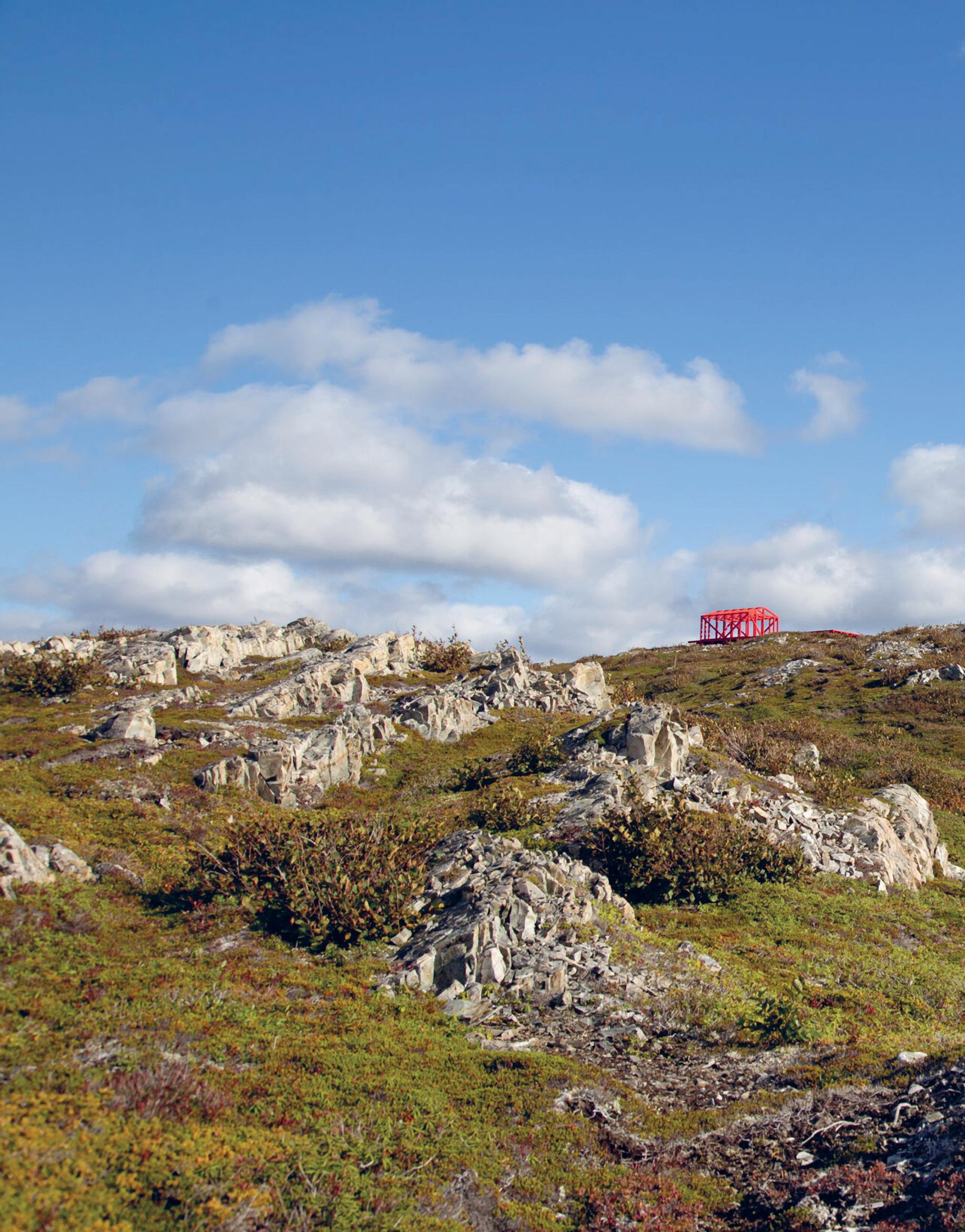
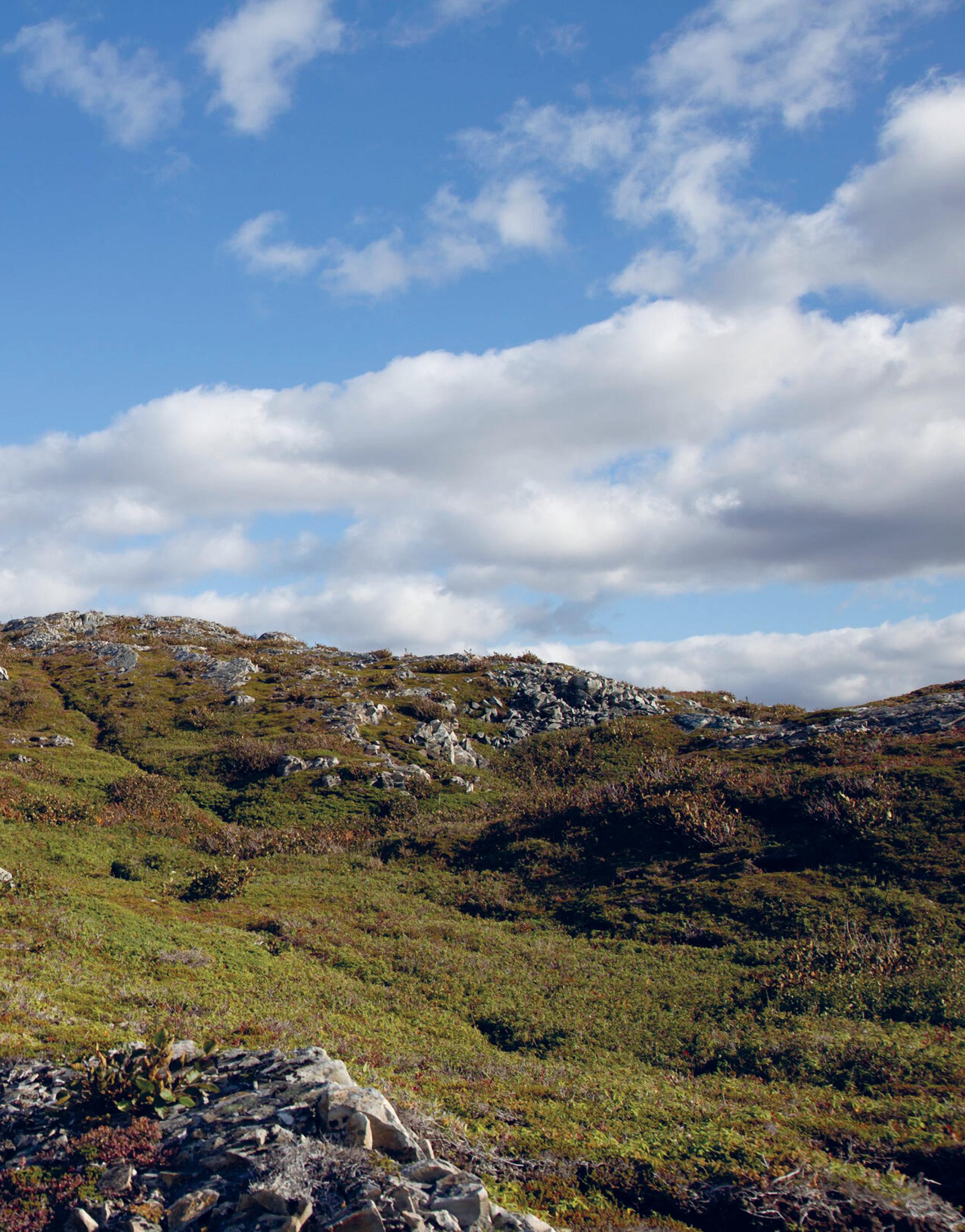
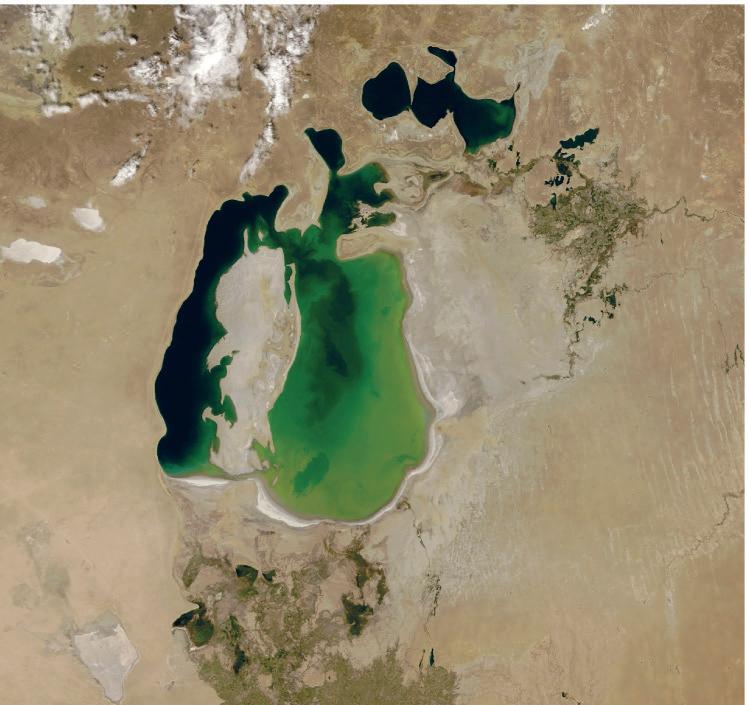
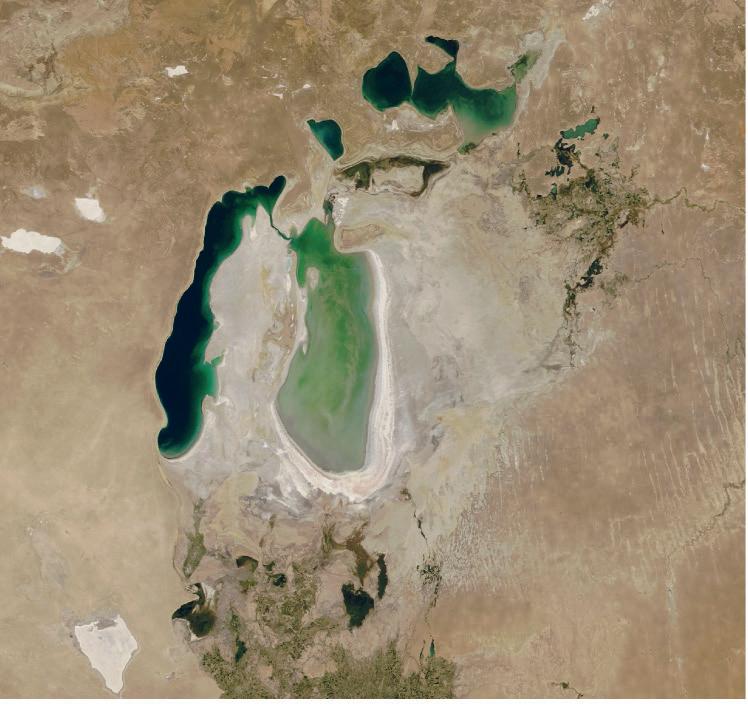
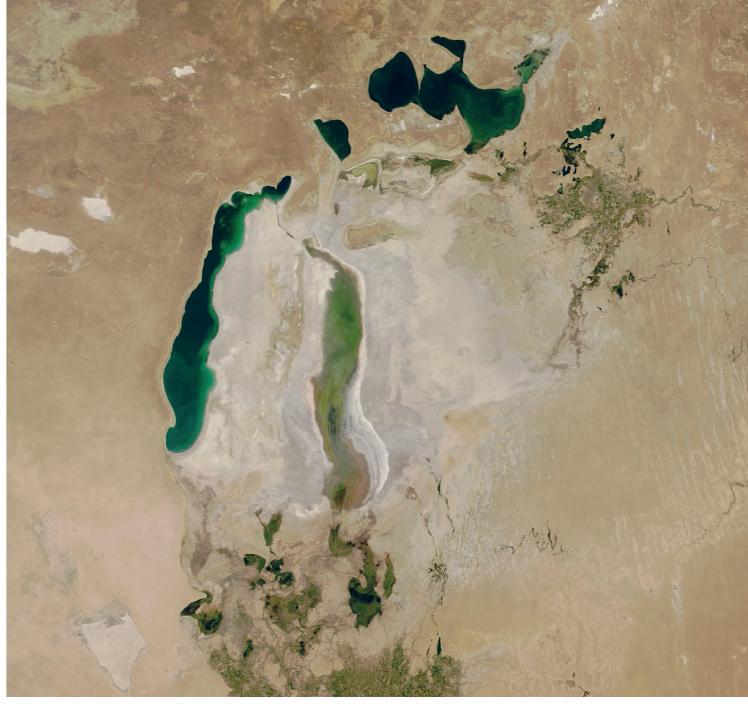
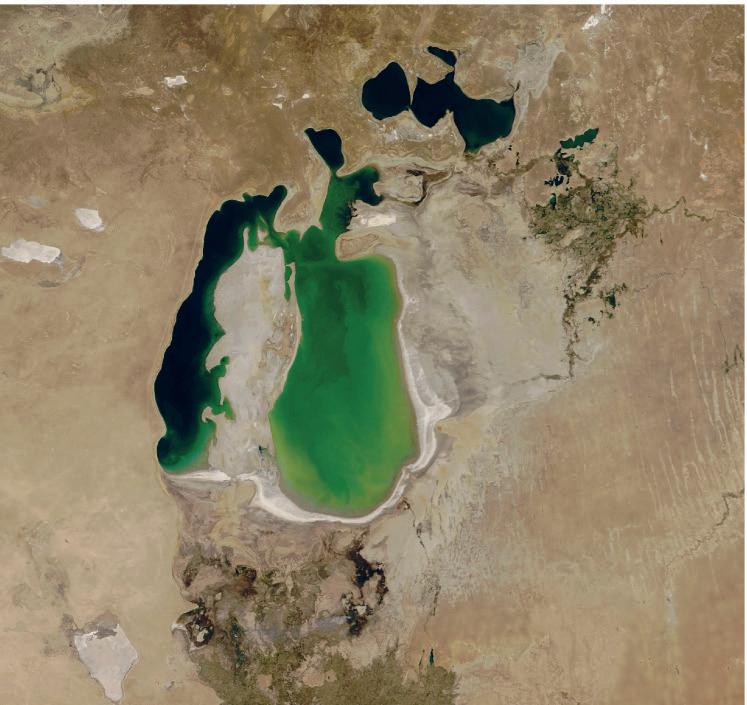
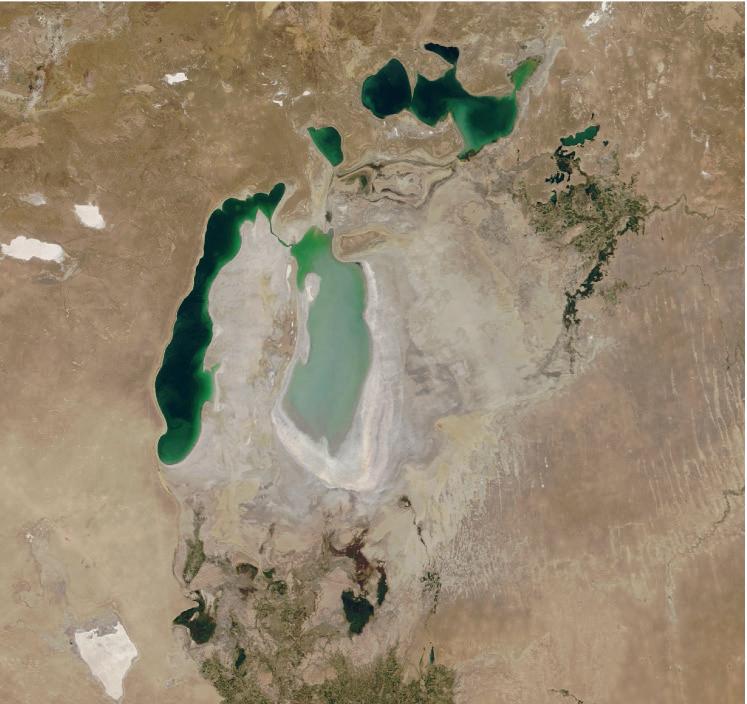
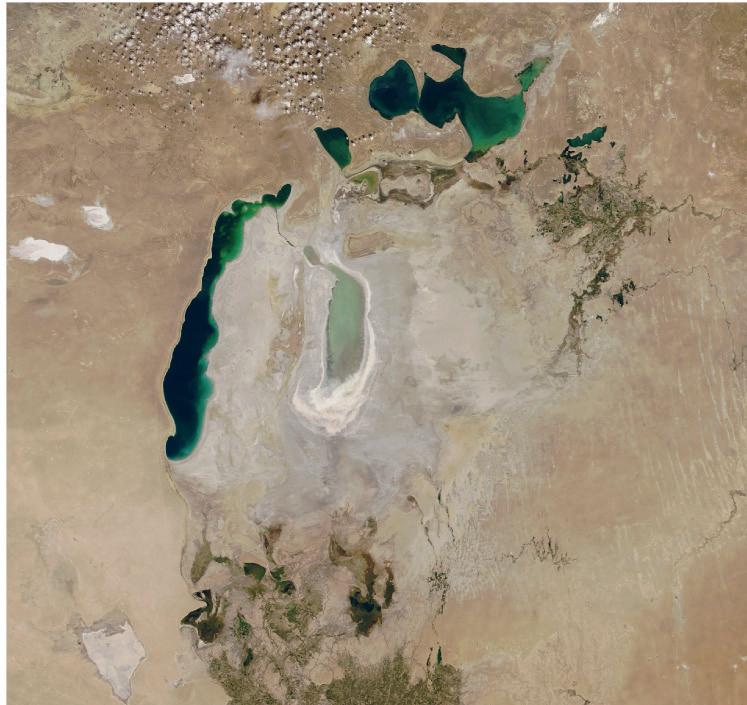
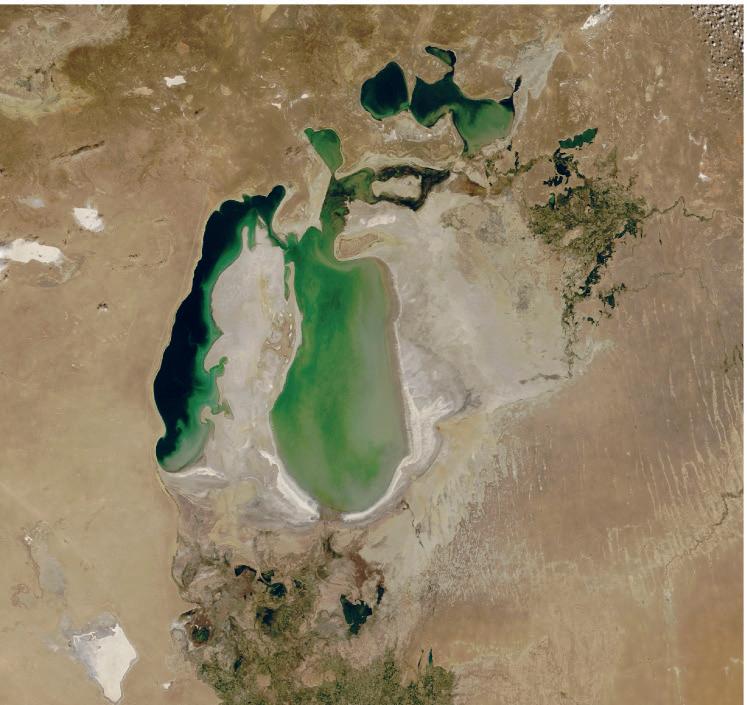
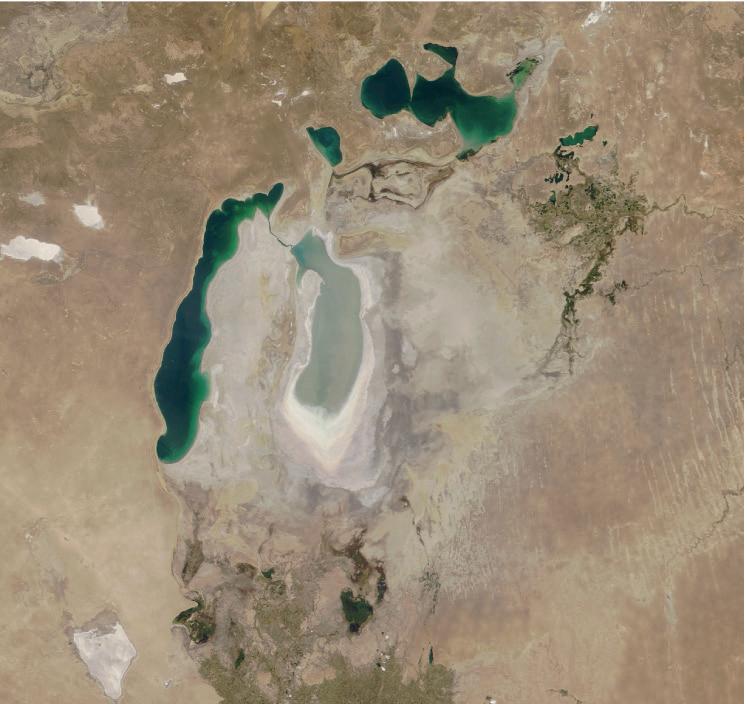
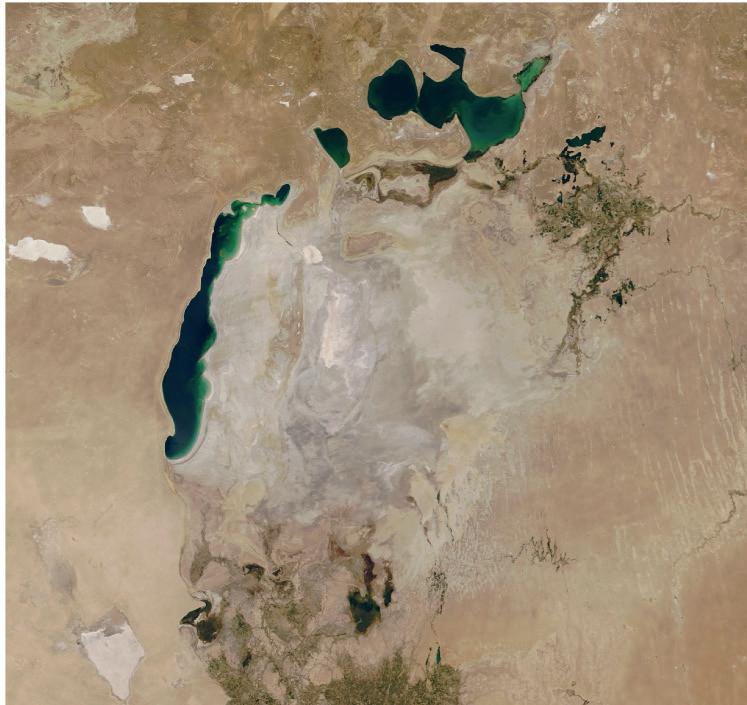
2000–2018.
